Eating the same things over and over for weeks and never leaving the house without tobacco and papers: these are just some of Erol Eskici’s eccentric habits. He is a dreamer and can tell you the names of any bird flying in the sky in Turkey. Due to his affinity with historical artifacts and objects, visiting Erol’s home is somewhat like visiting a museum. Each object in his apartment has a story. Some are shrouded in secrecy and others are openly handled and discussed. Despite his calm exterior, powerful and dark expressions are conveyed through his paintings that reveal another side to his personality. One is drawn to the tension and complexity within the works and questions left unanswered.
Erol is a young visual artist of 29 years. Growing up in Hakkari – East Anatolia – he has been living in Istanbul for nine years and is currently represented by Merkür Galery in Nişantaşı. His home and studio are constantly in flux with new re-arrangements of his belongings throughout the apartment. Before heading to his abode, Erol stops off at his favorite tea garden, close to Istiklal Caddesi, and enjoys the warm air and sweet cay. From there he wanders around the narrow streets of Beyoğlu to the Hotel Londres, pointing out the amazing view from the roof terrace. Filled with the beauty of the golden horn he leaves the hotel, entering his district of Tepebaşı to climb the worn stairs of his building that reveal the marks of time.
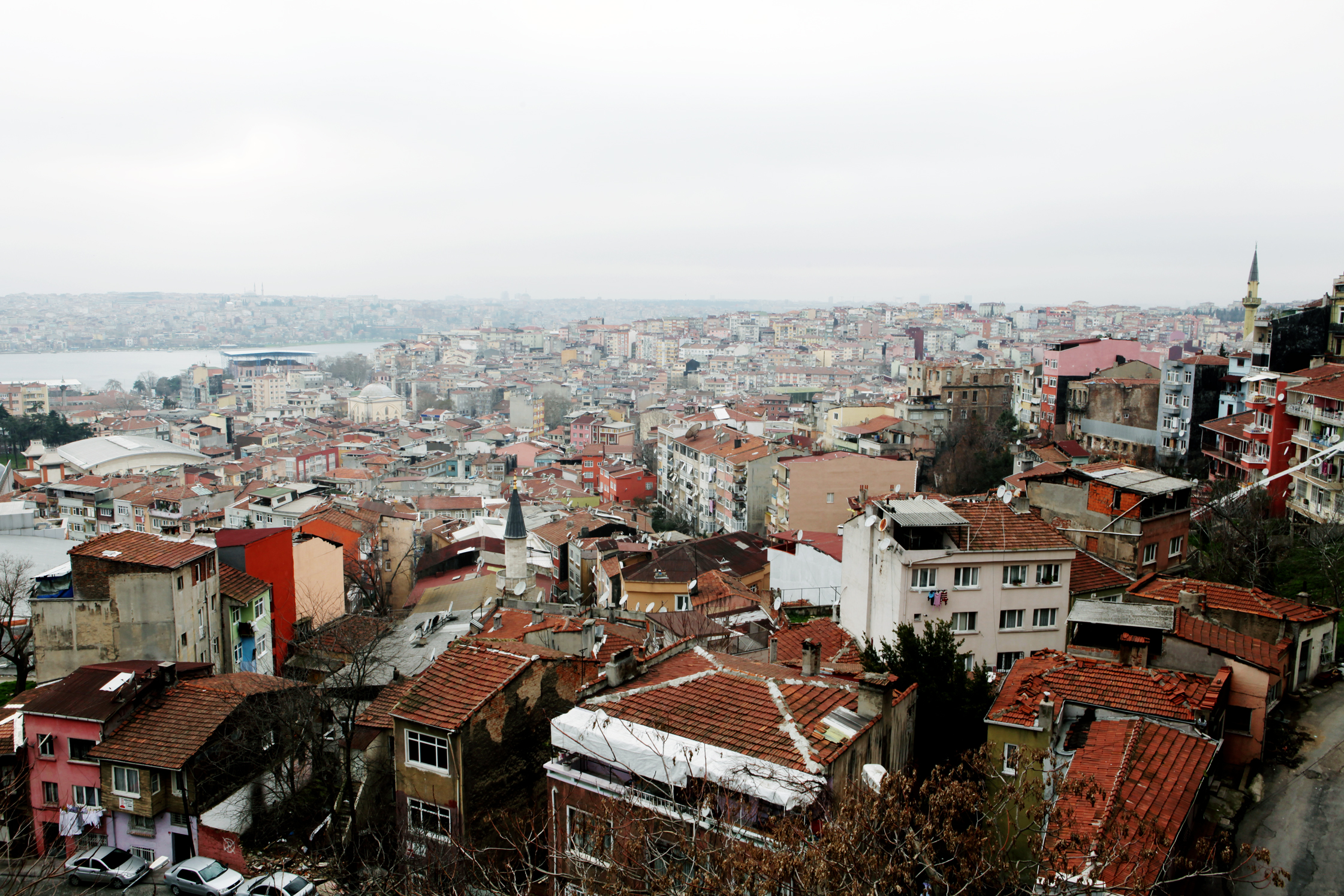
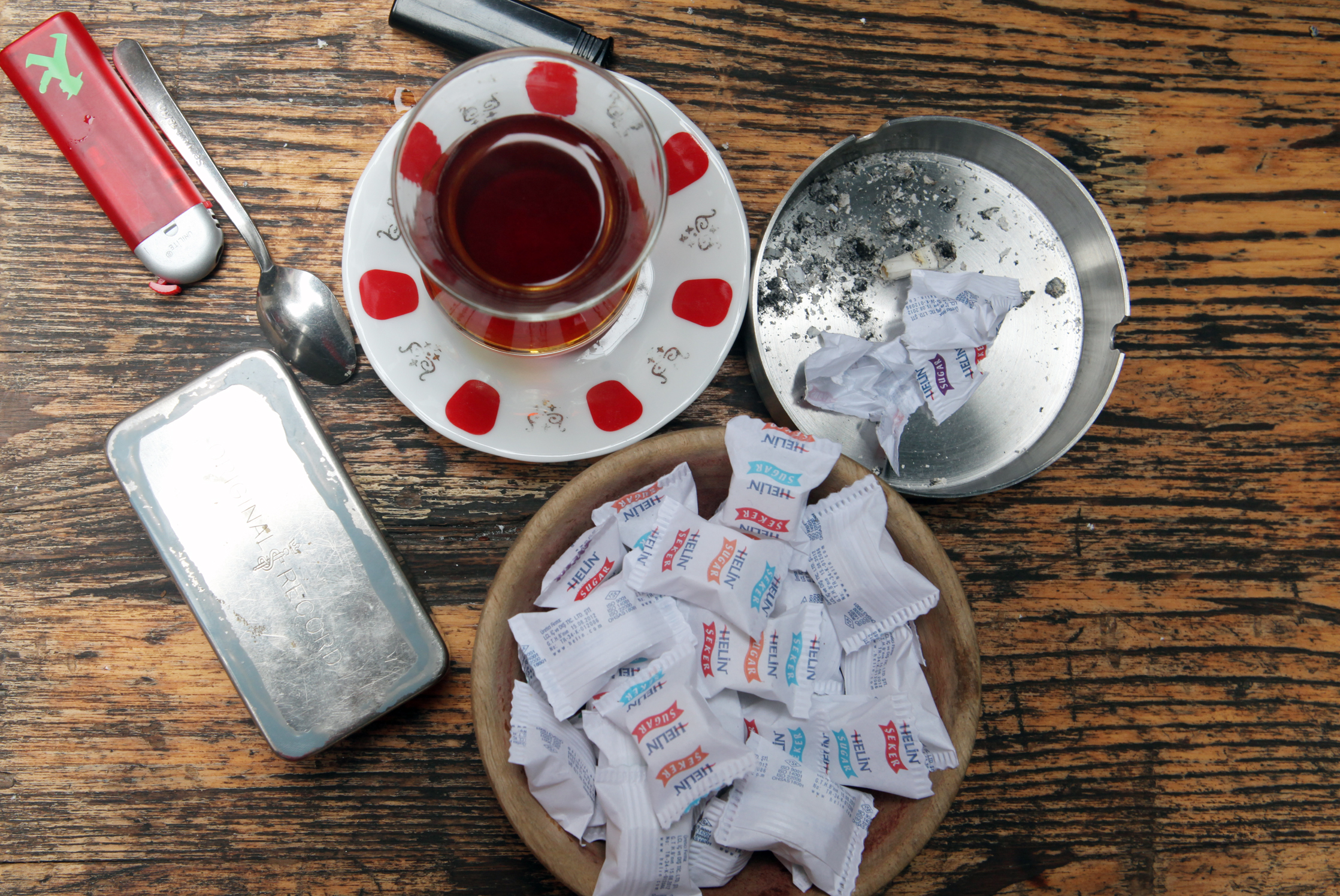
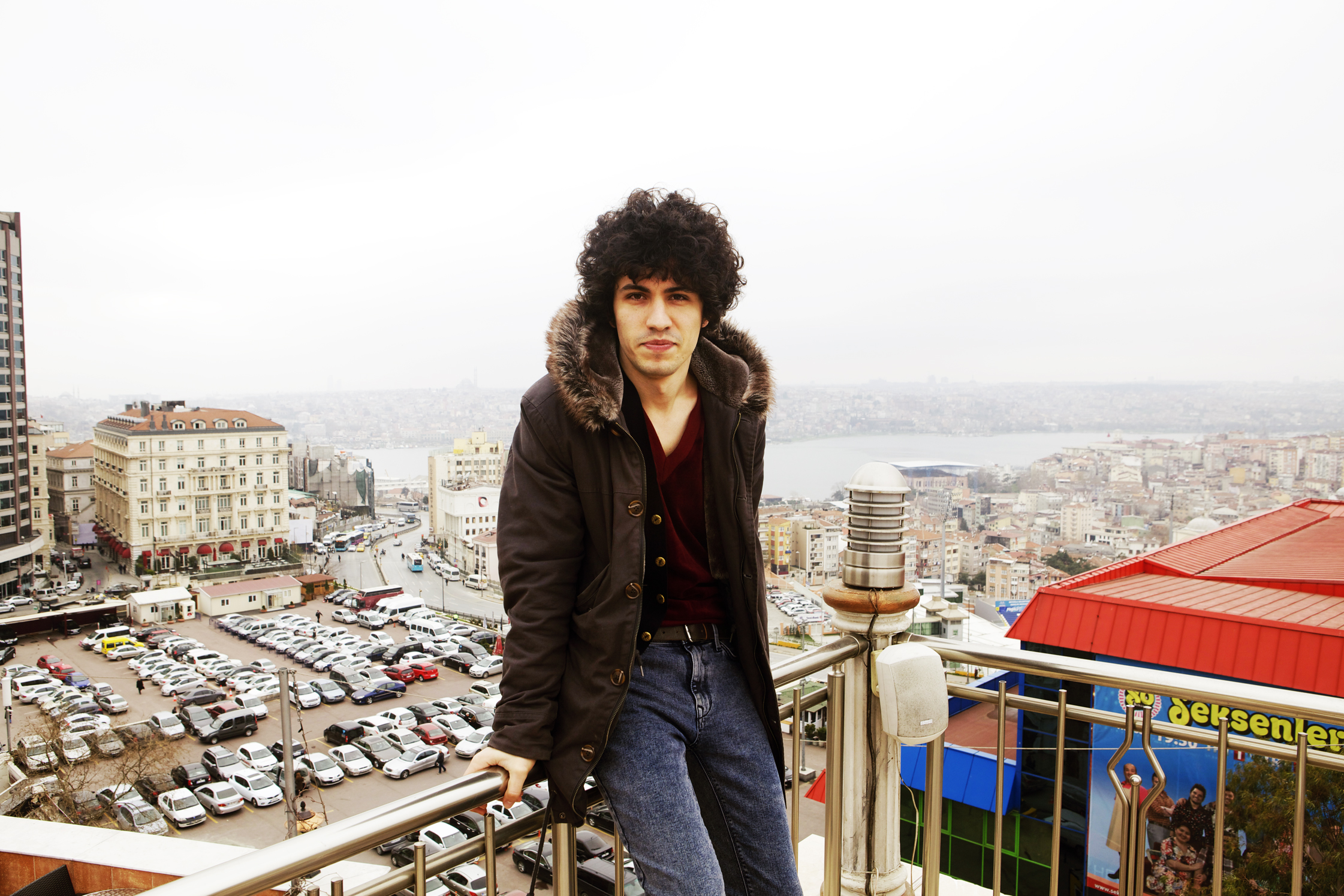
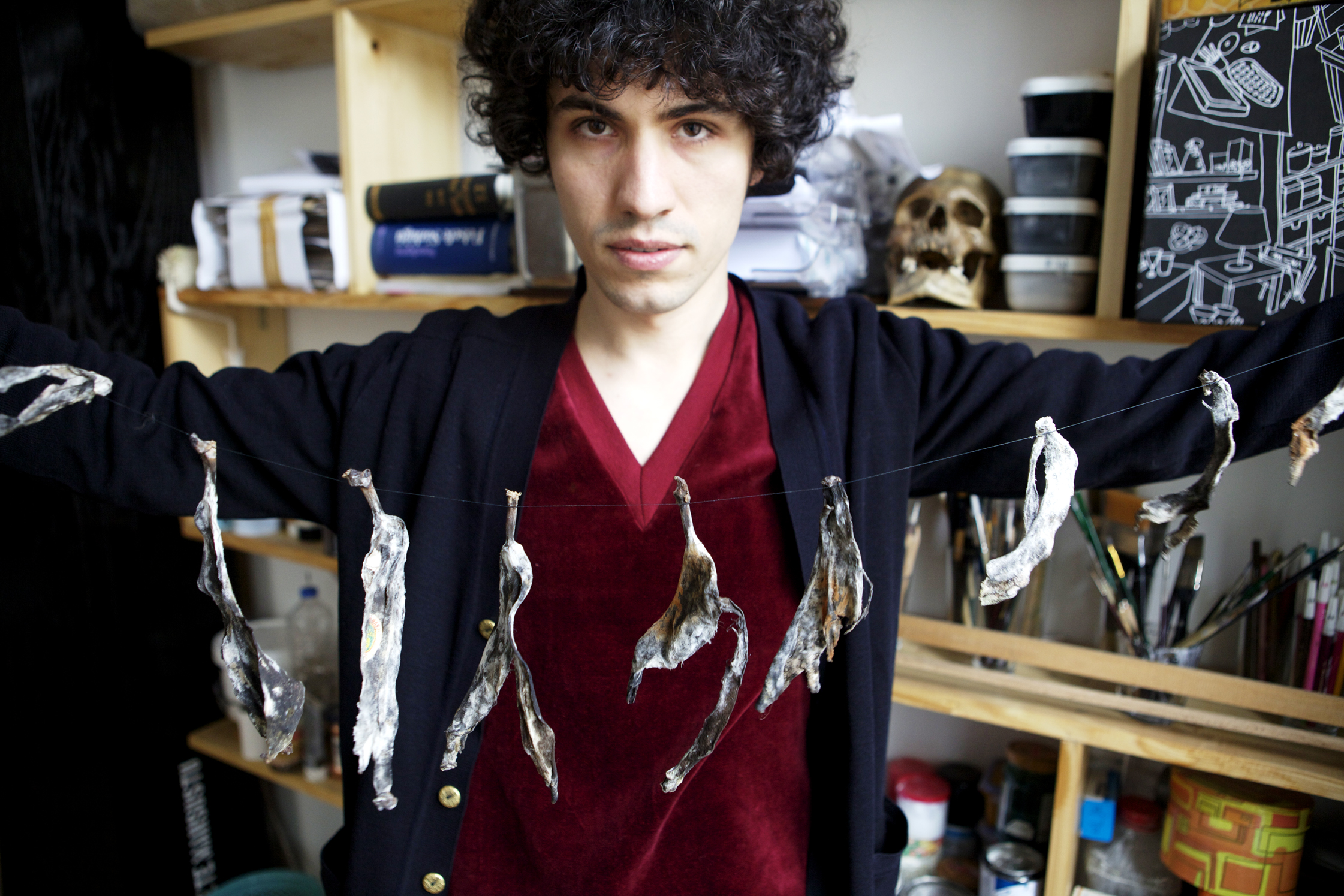
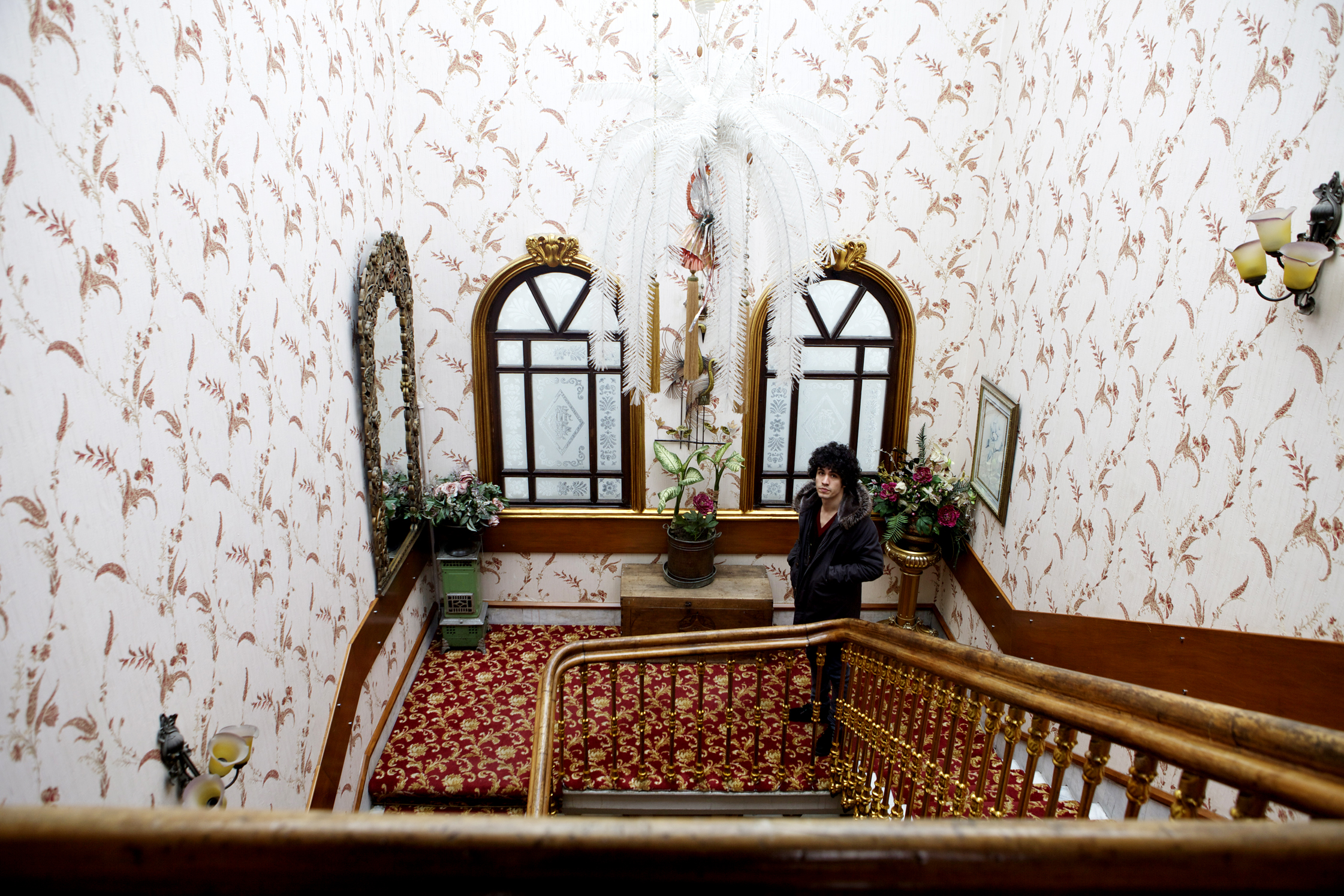
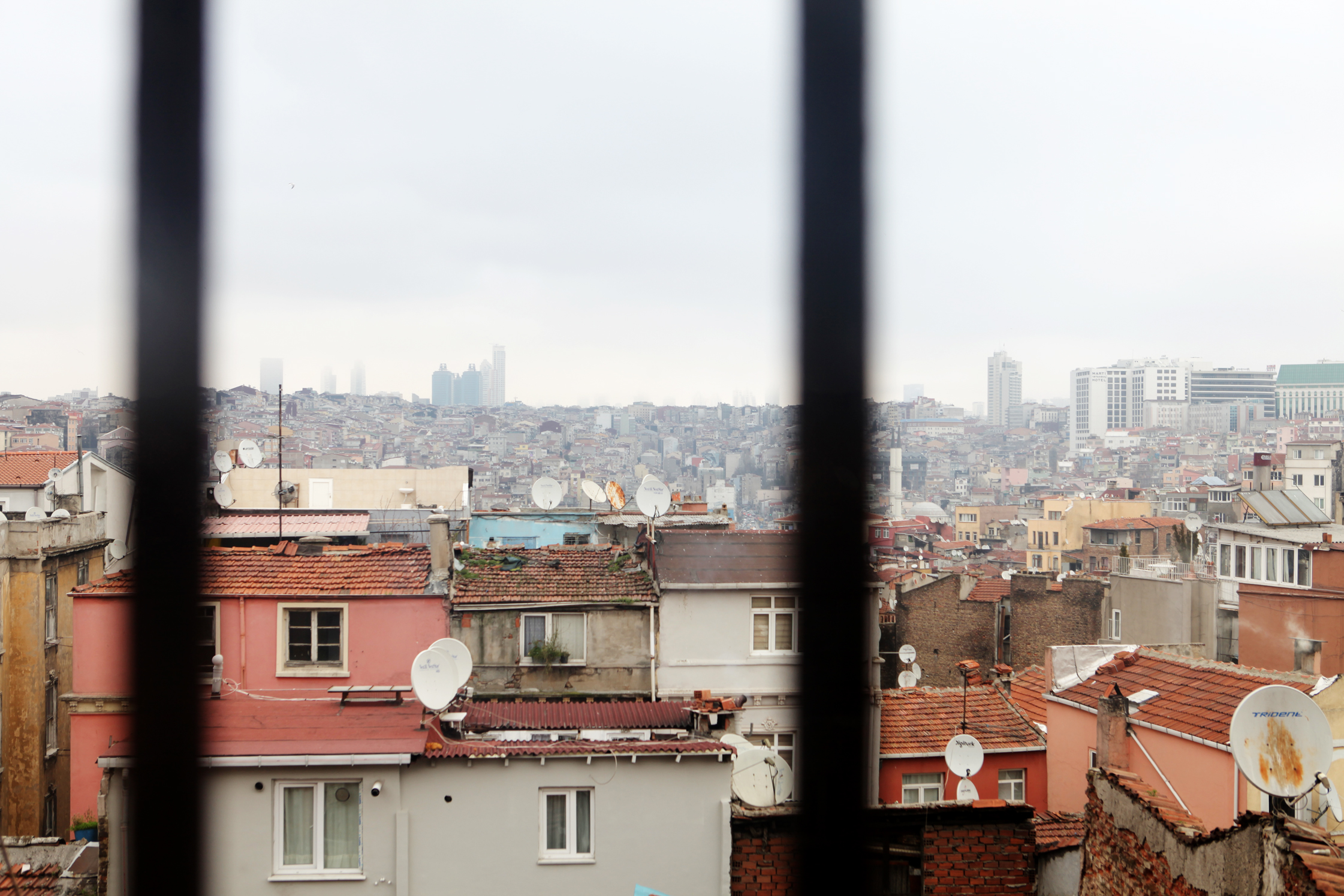
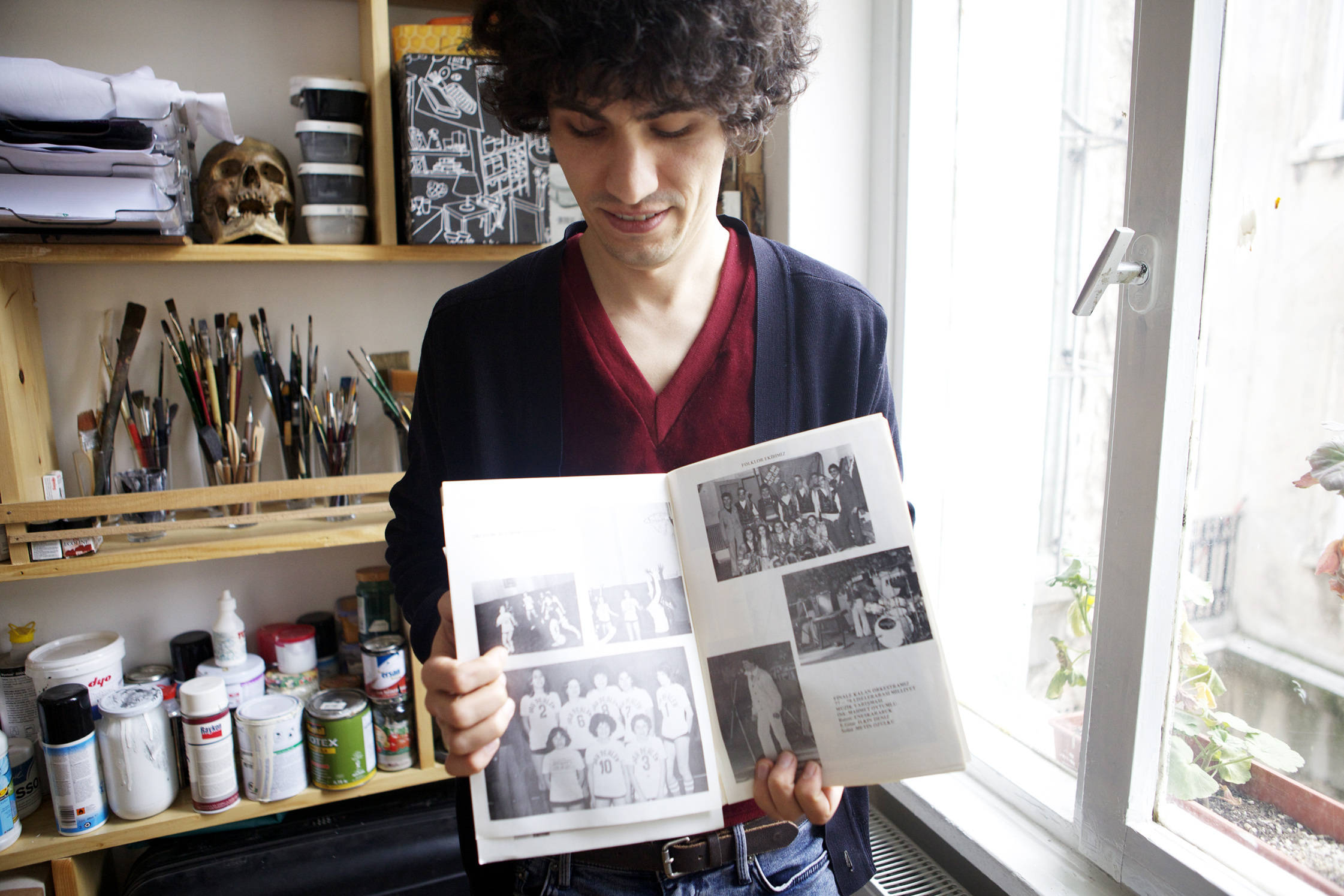
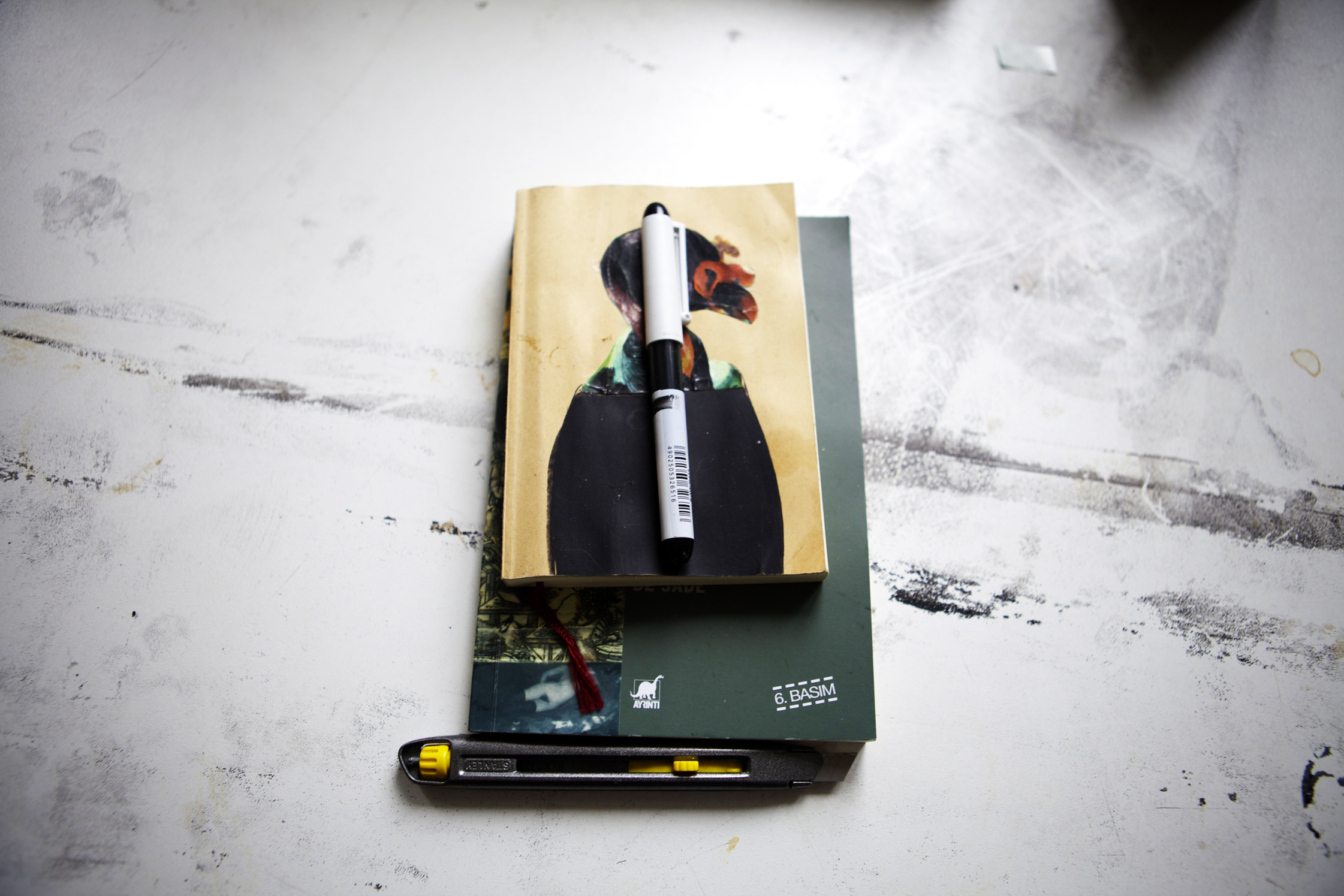
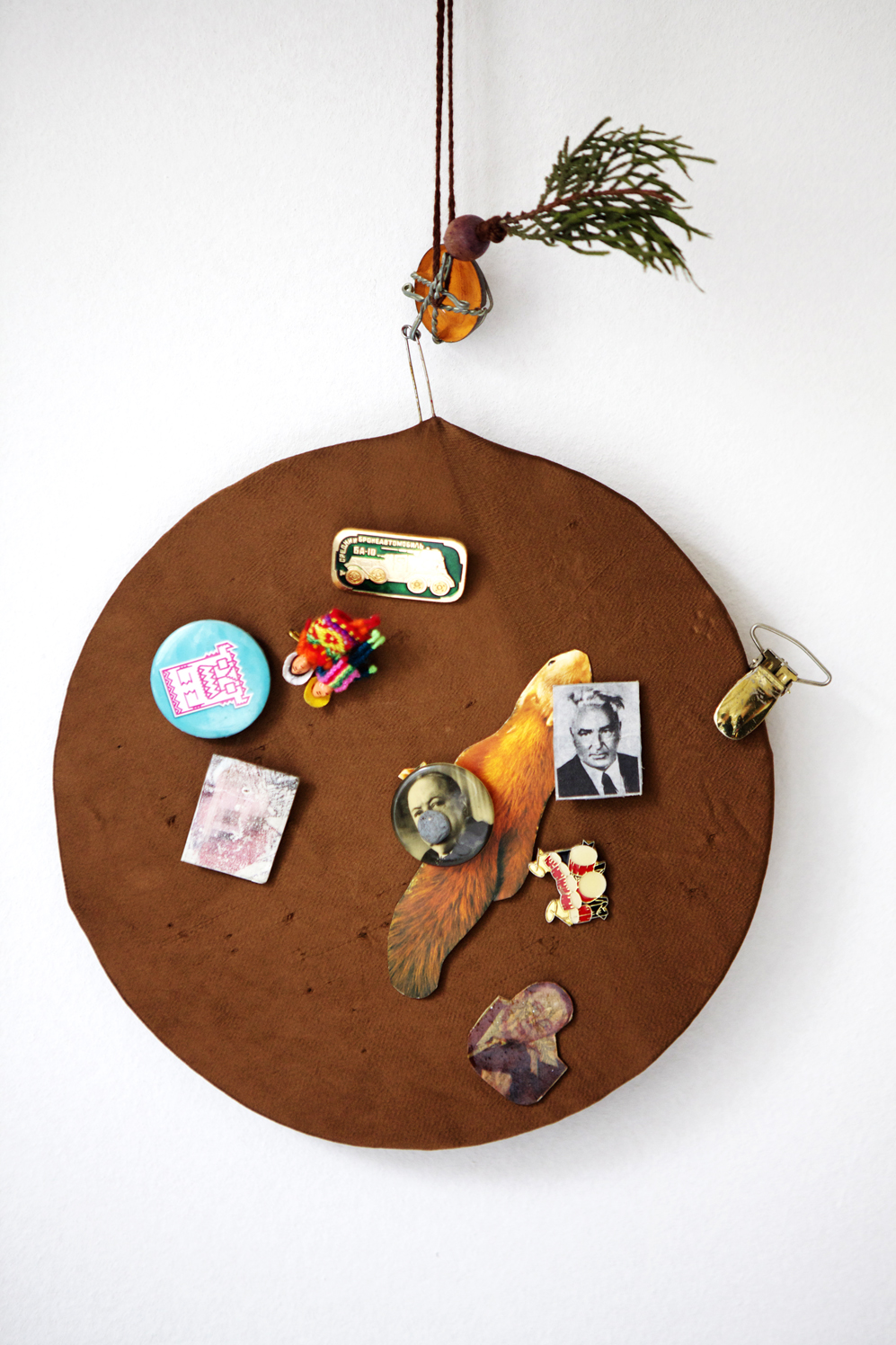
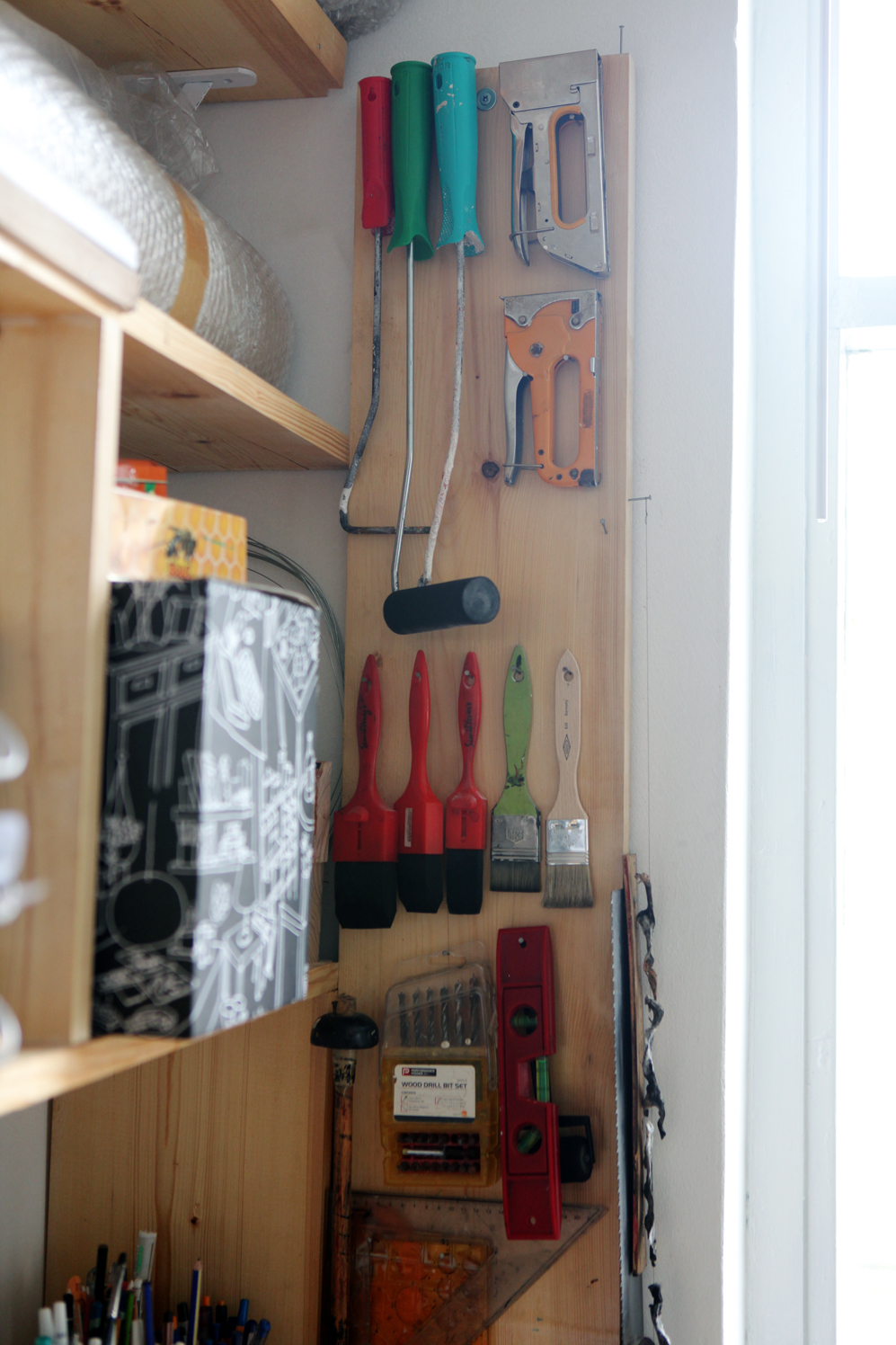
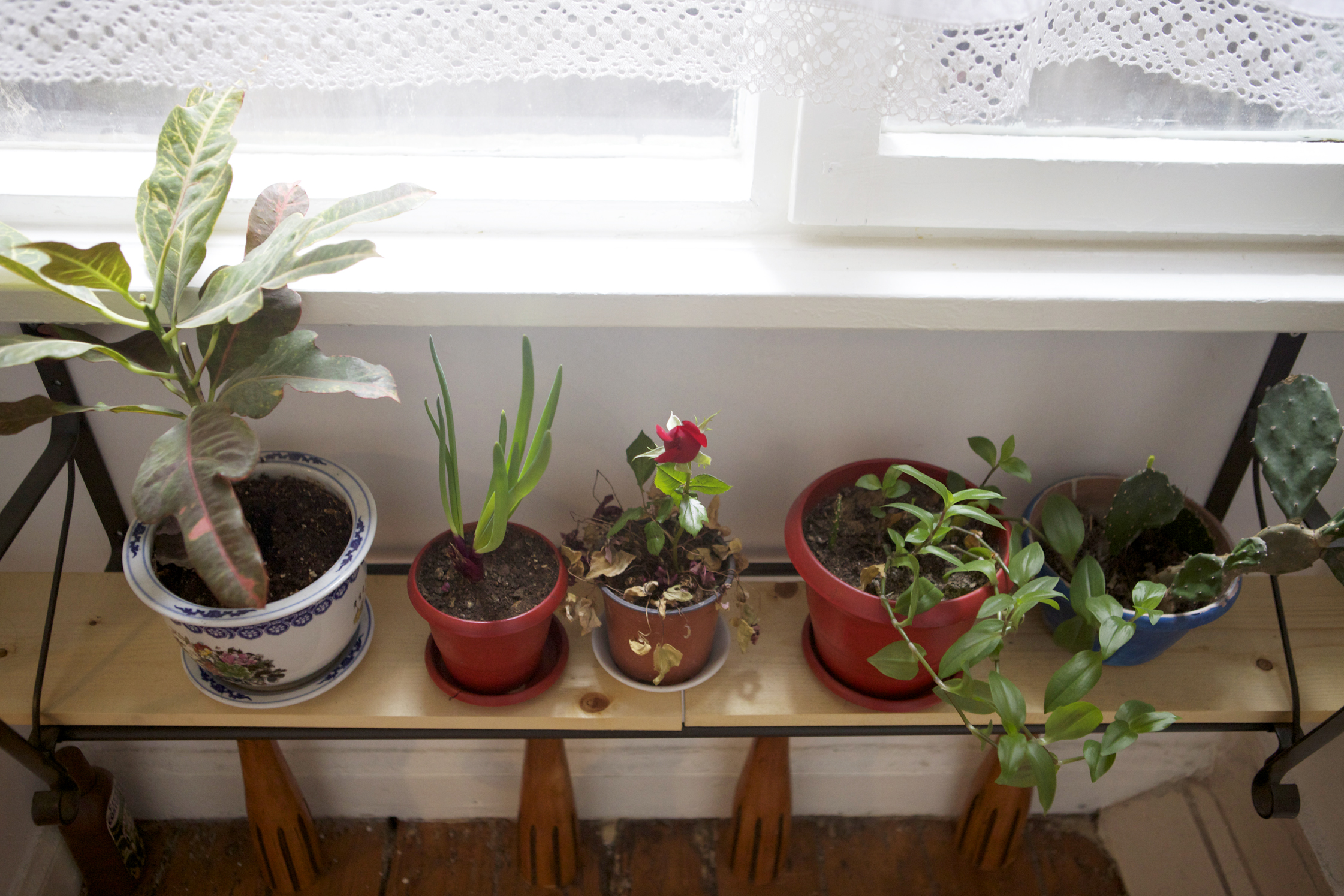
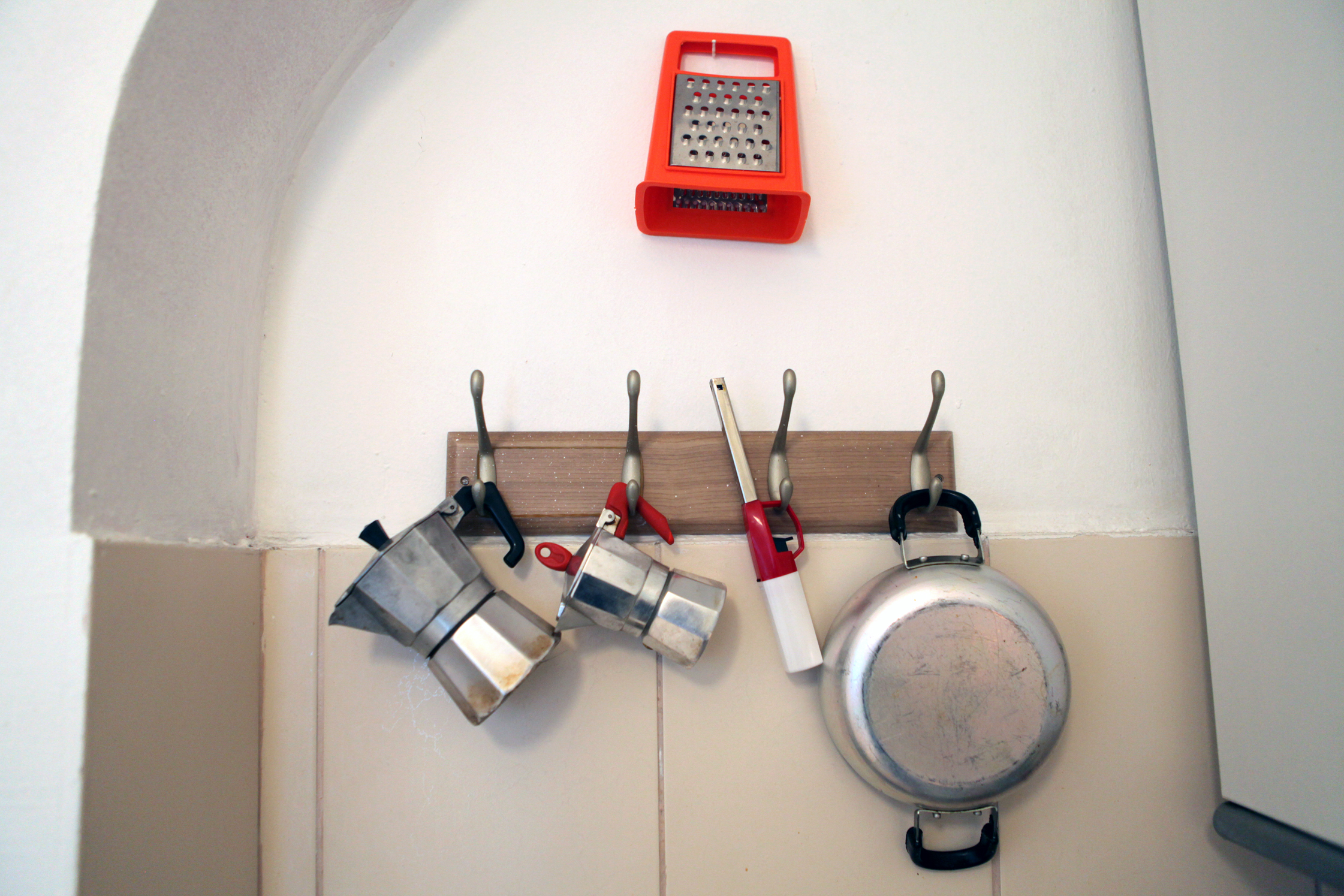
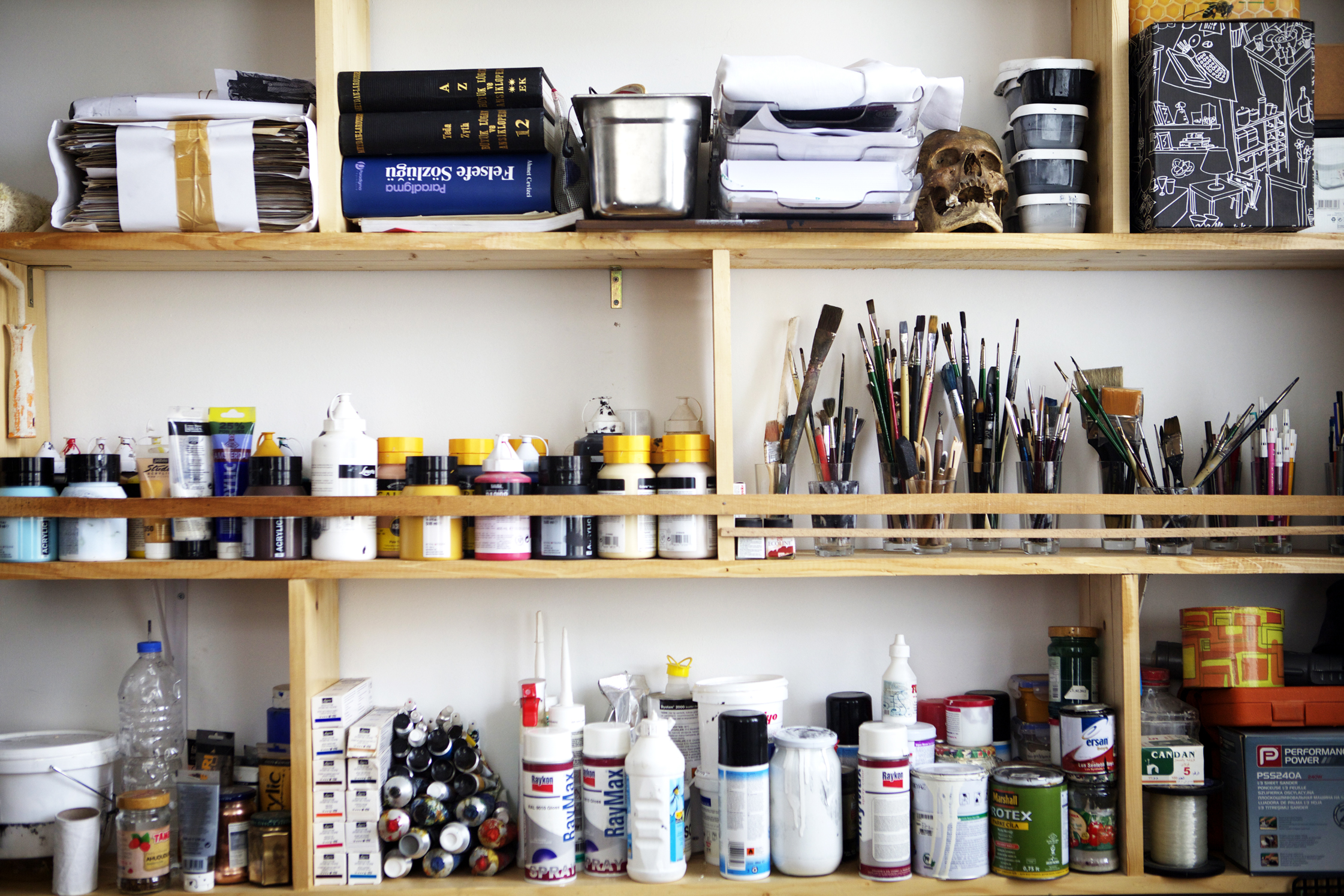
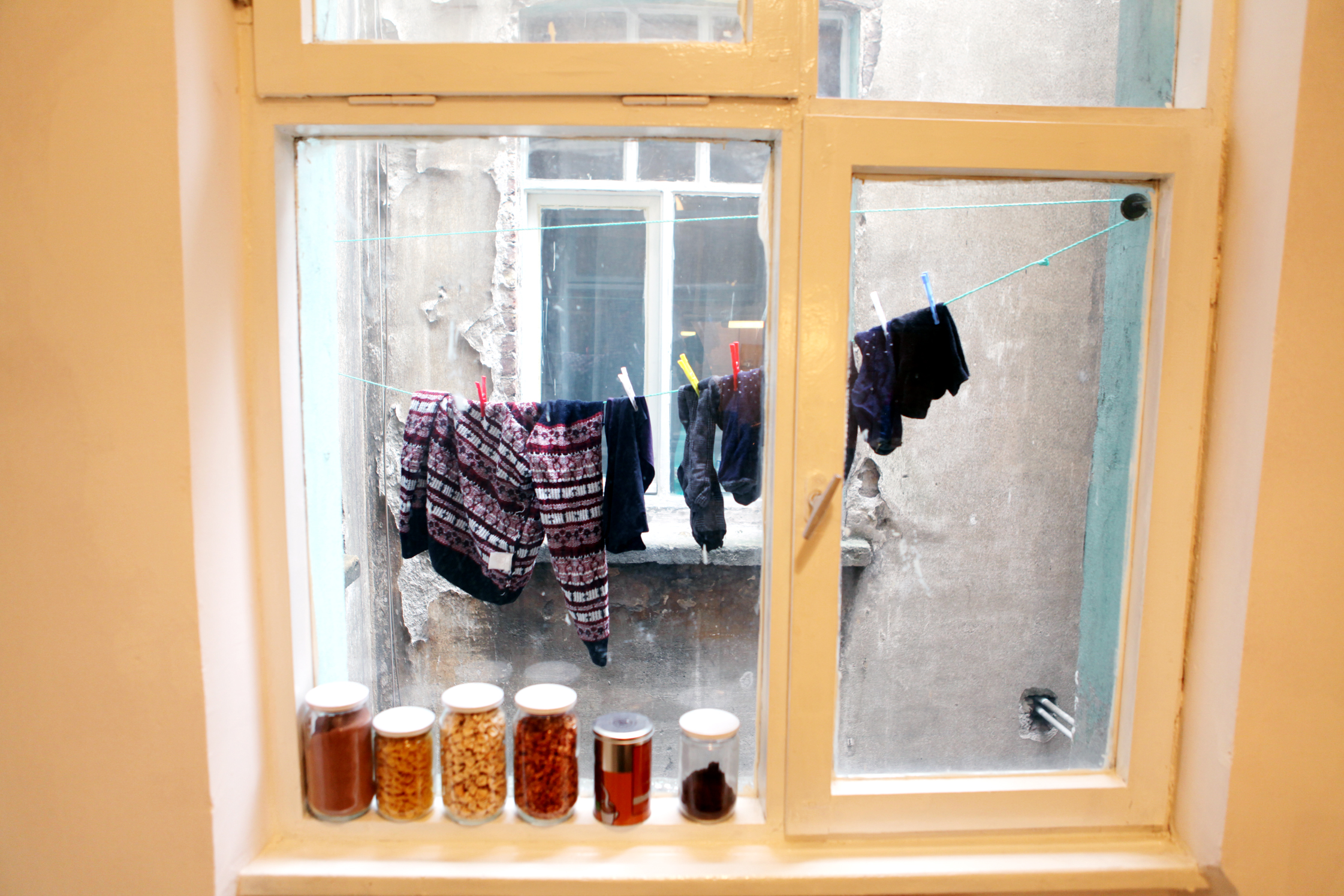
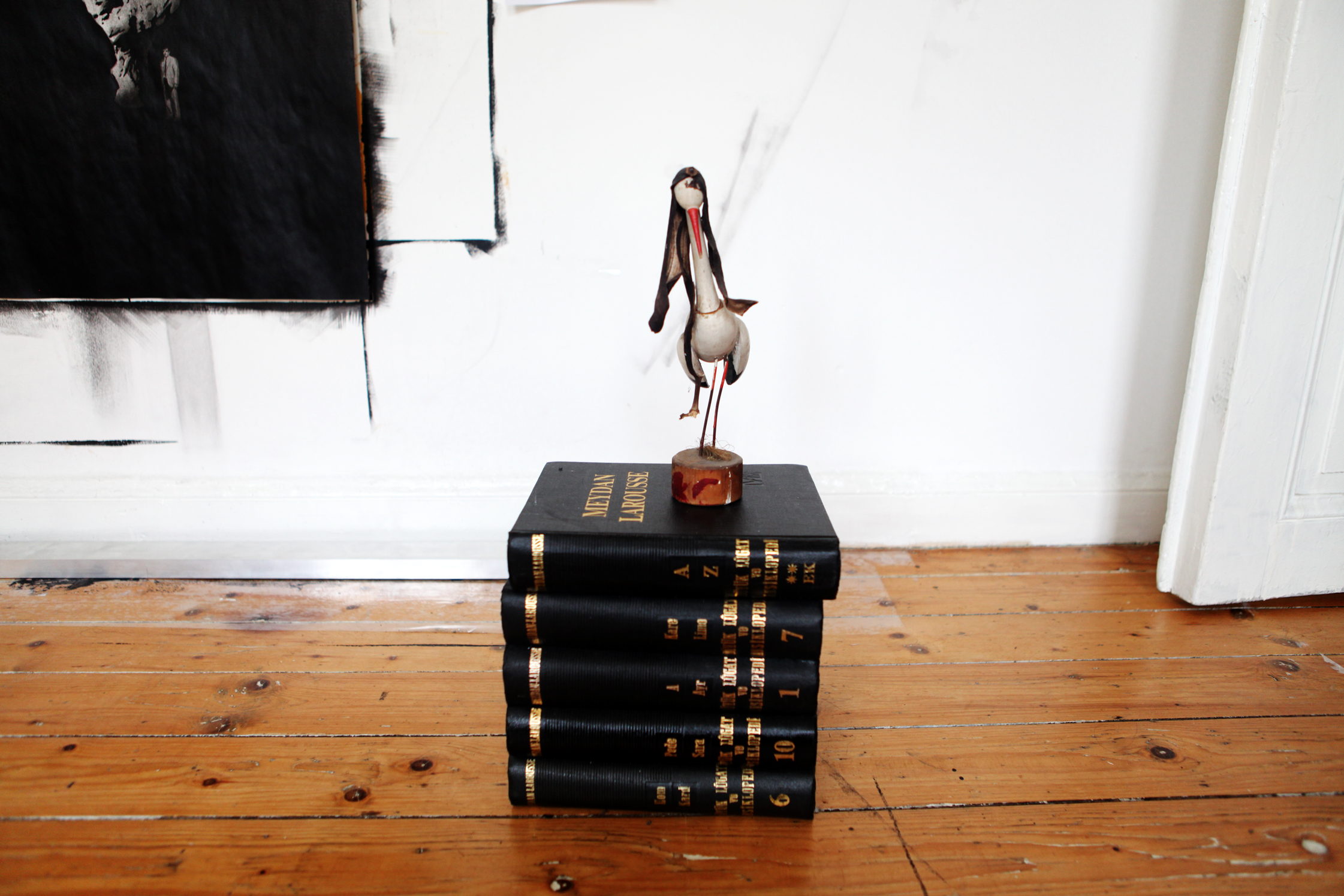
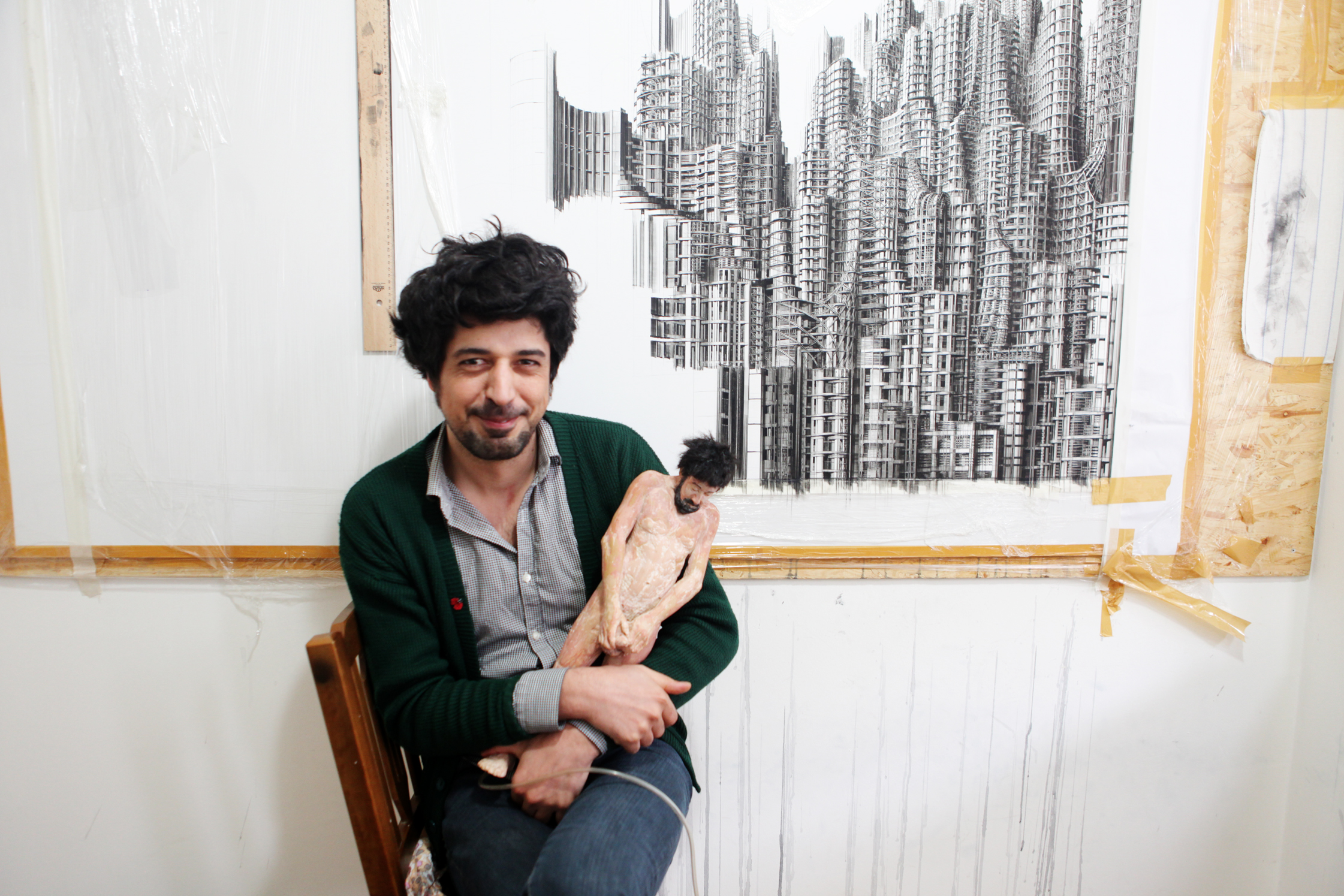
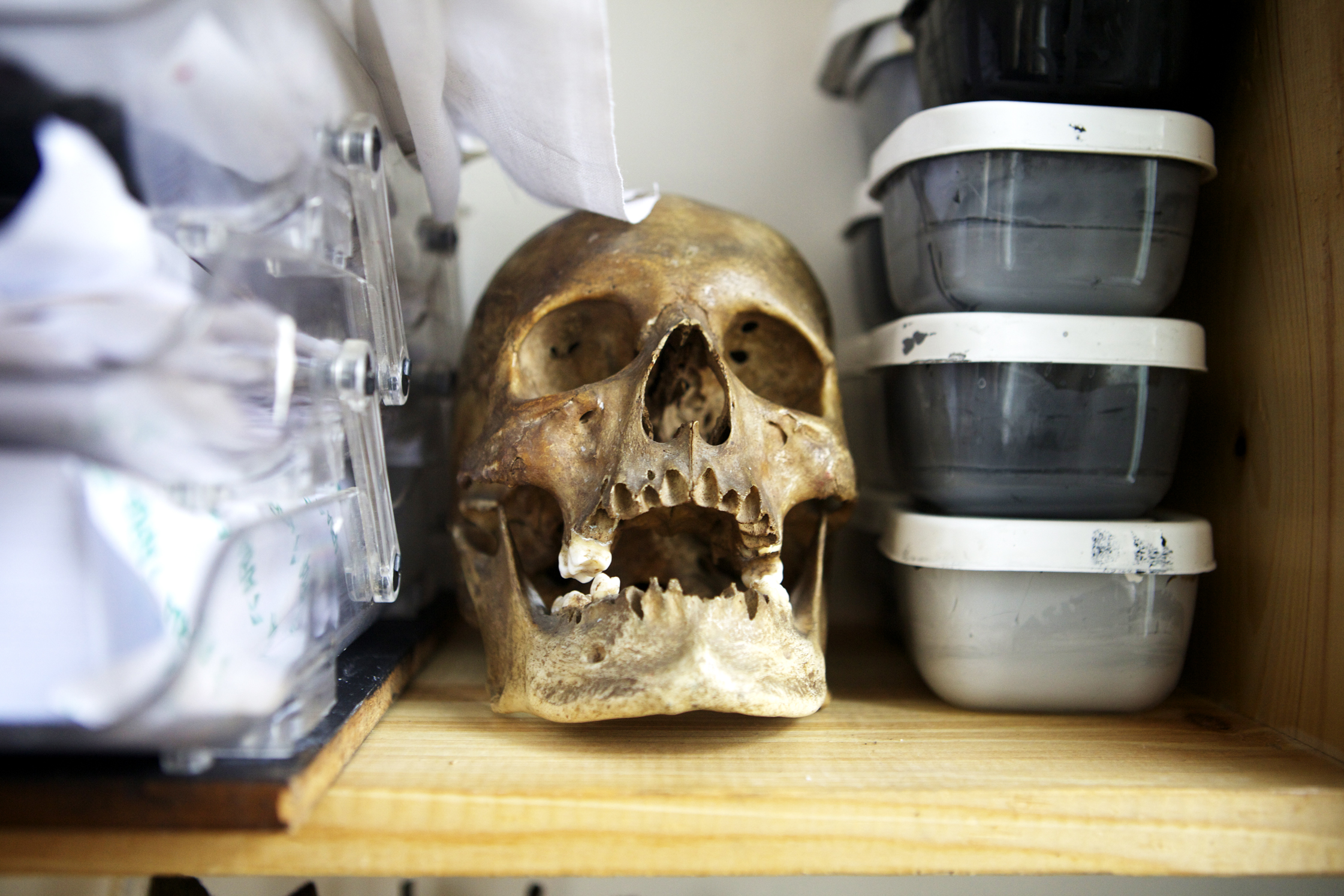
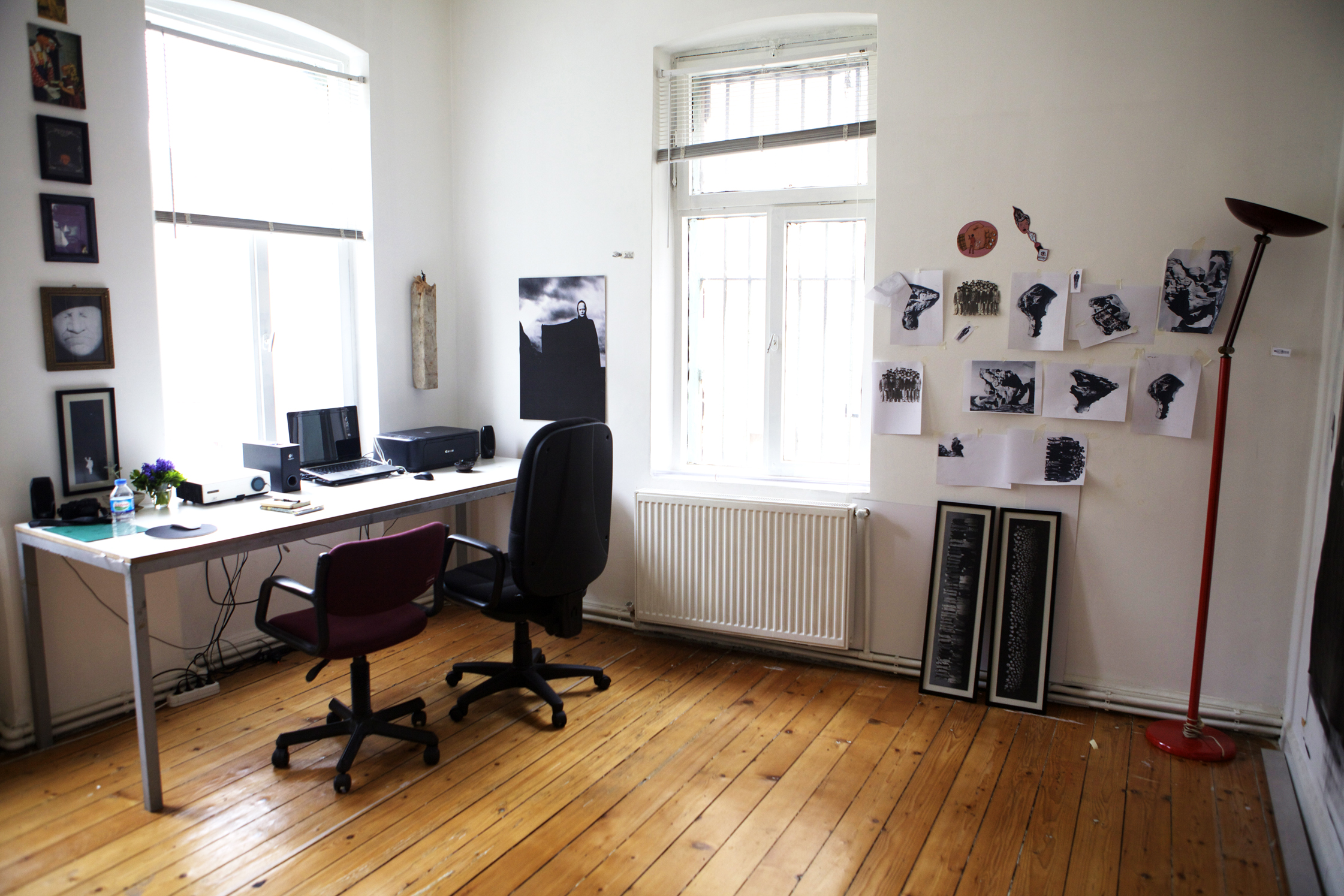
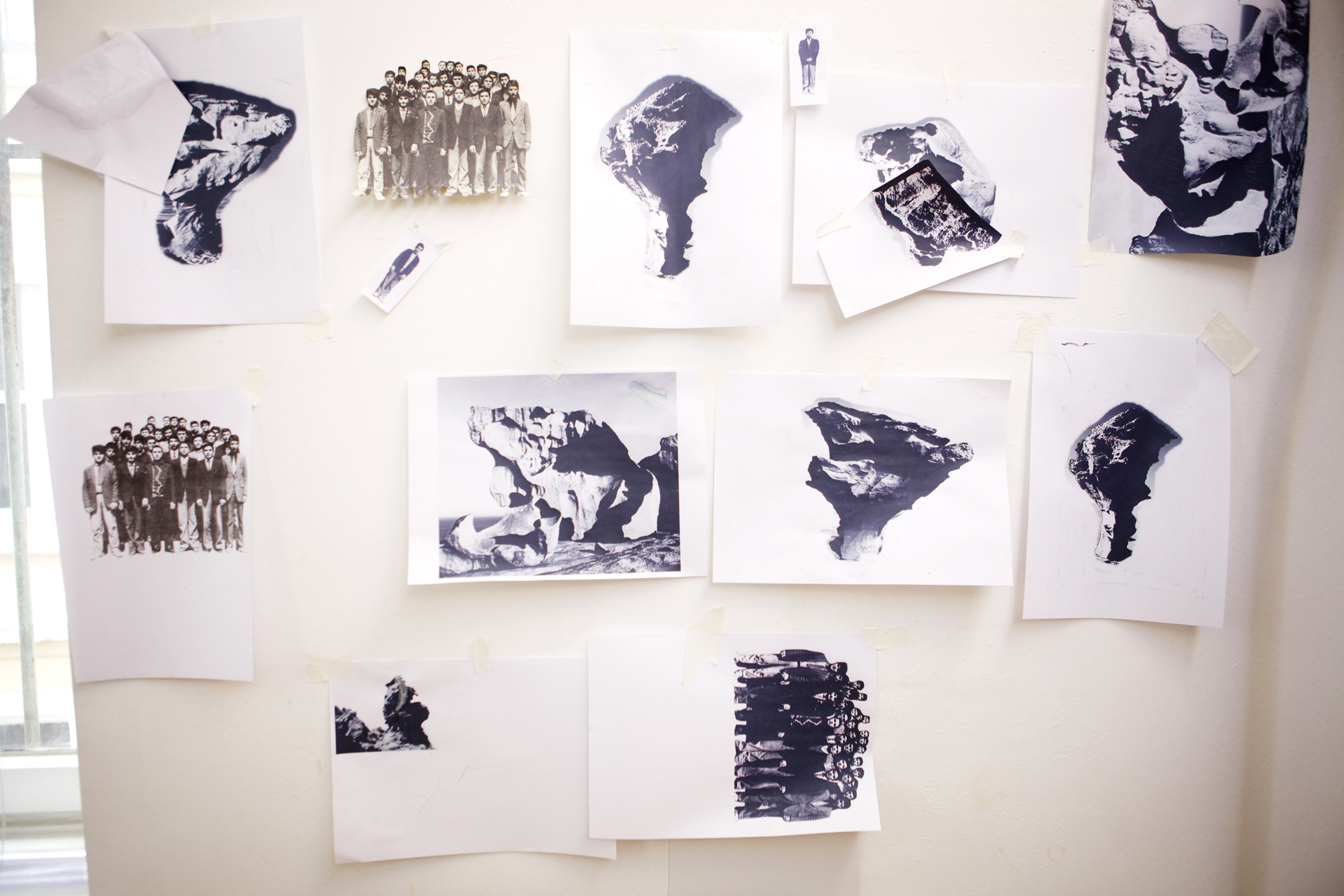
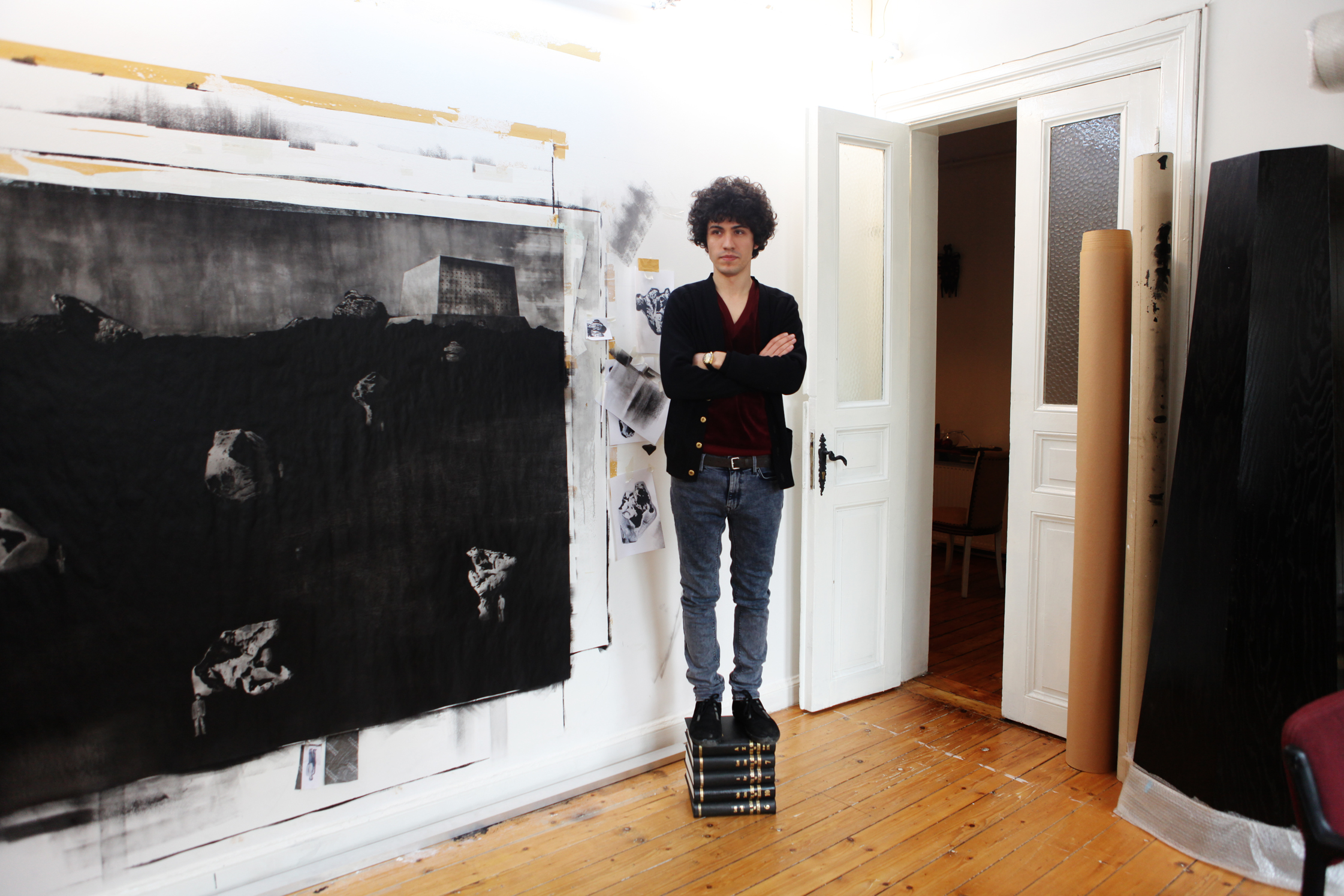
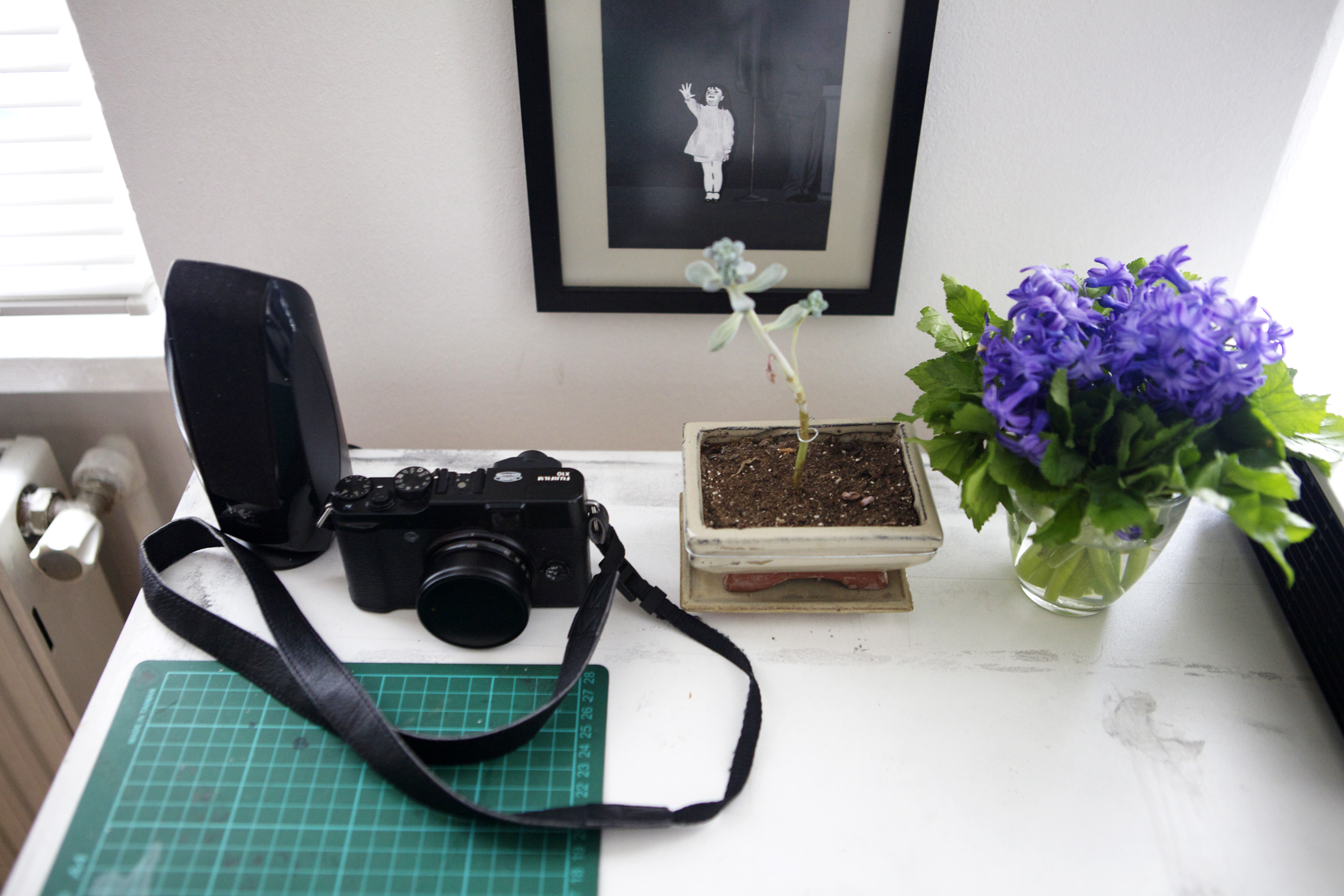
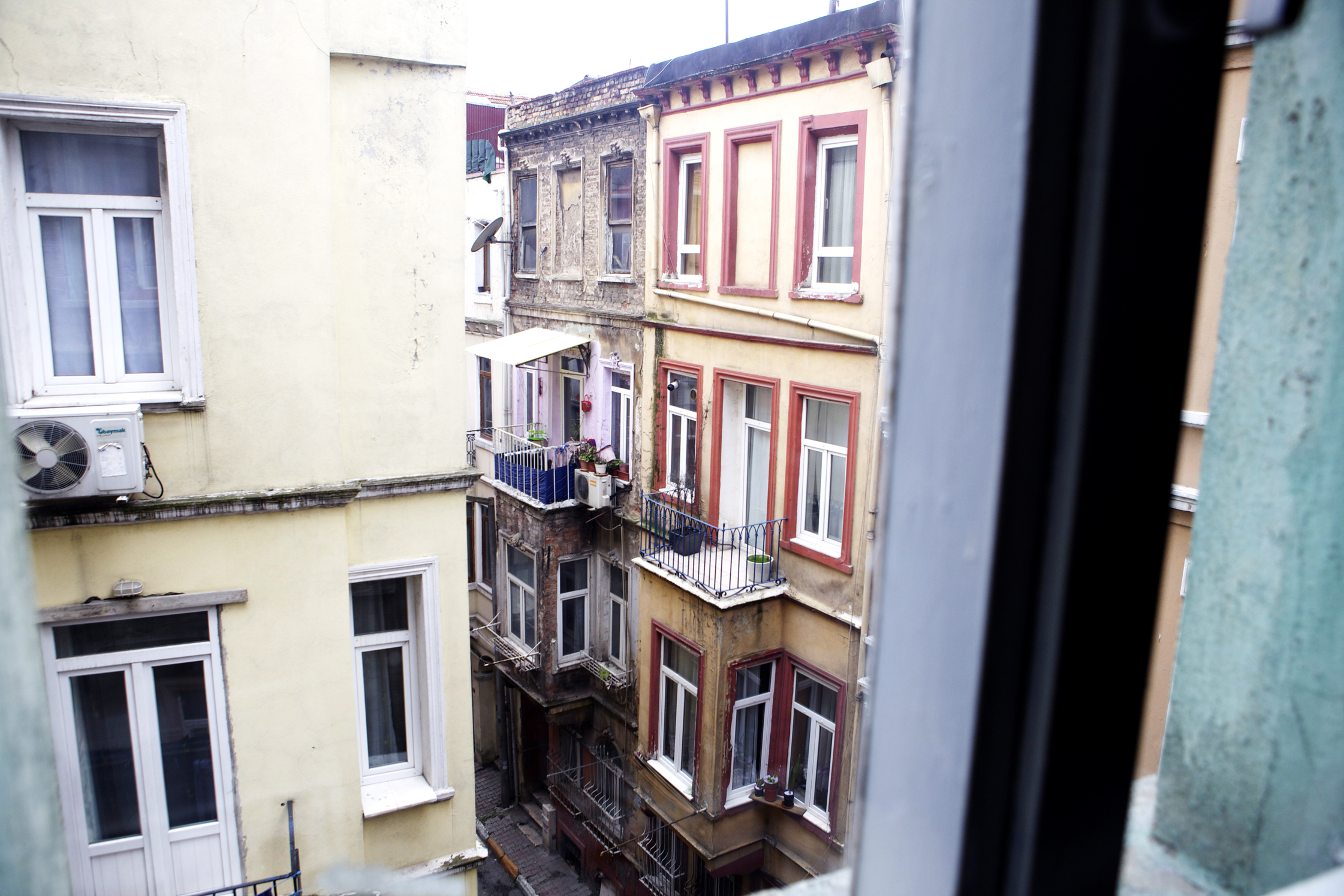
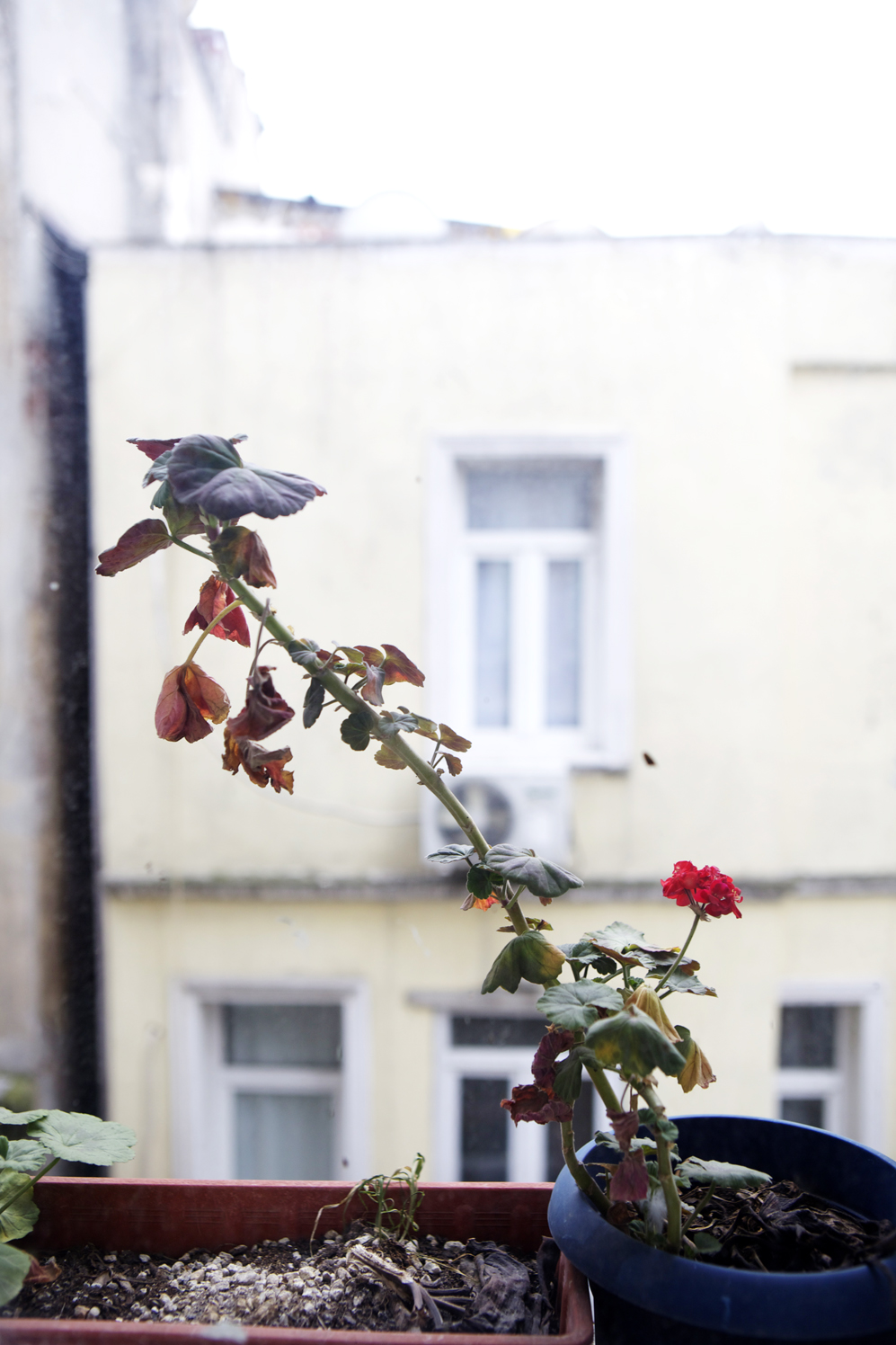
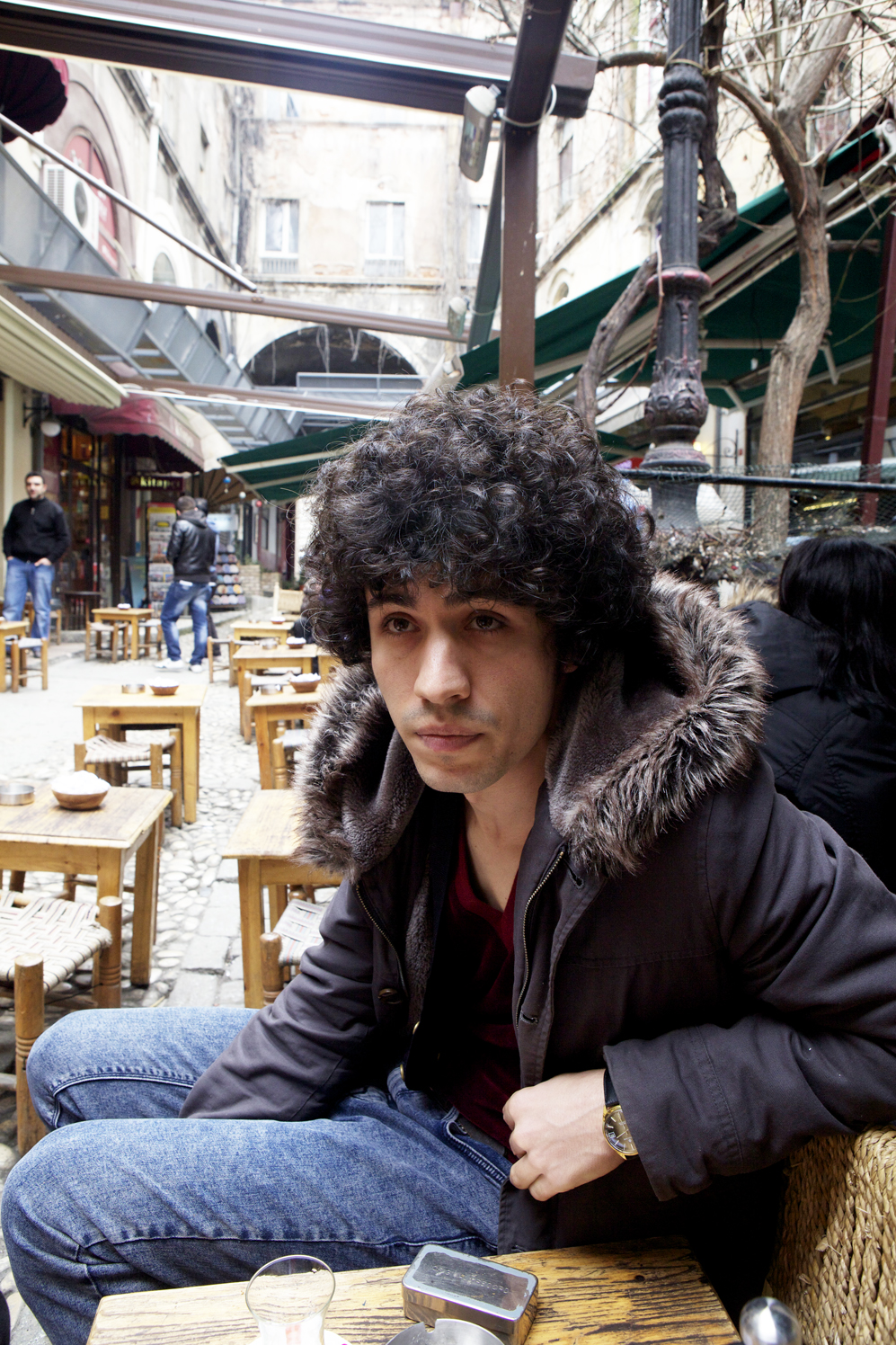
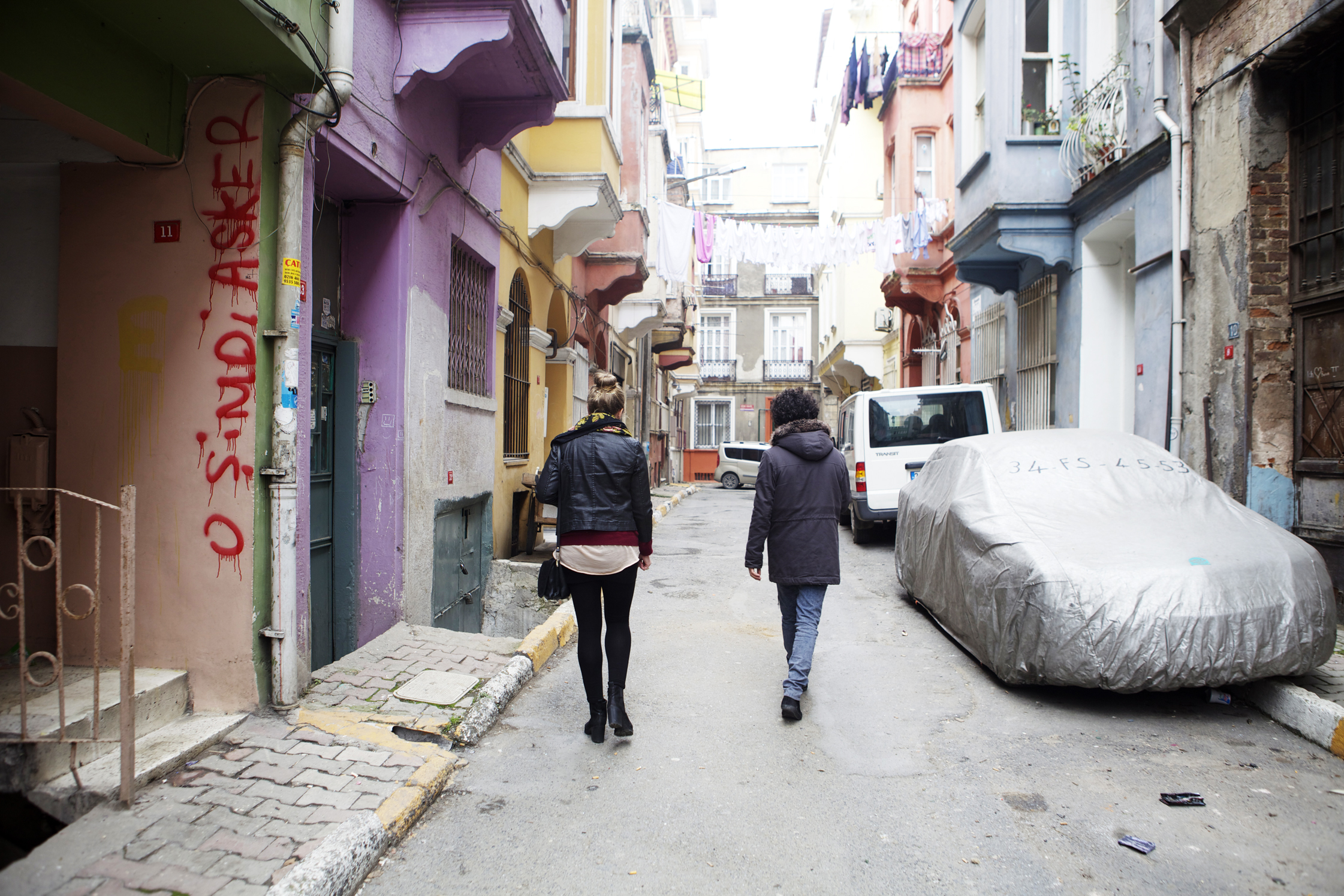
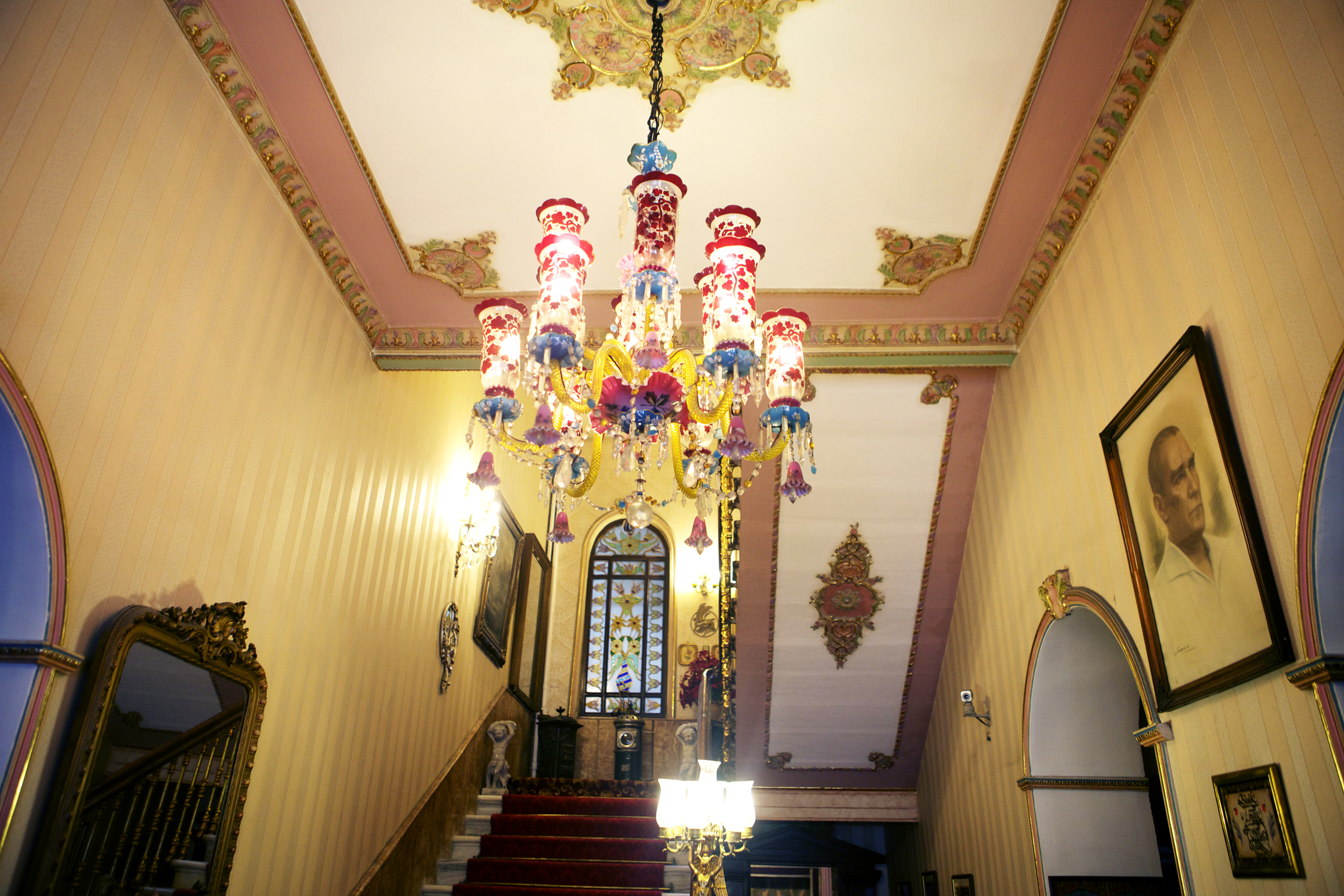
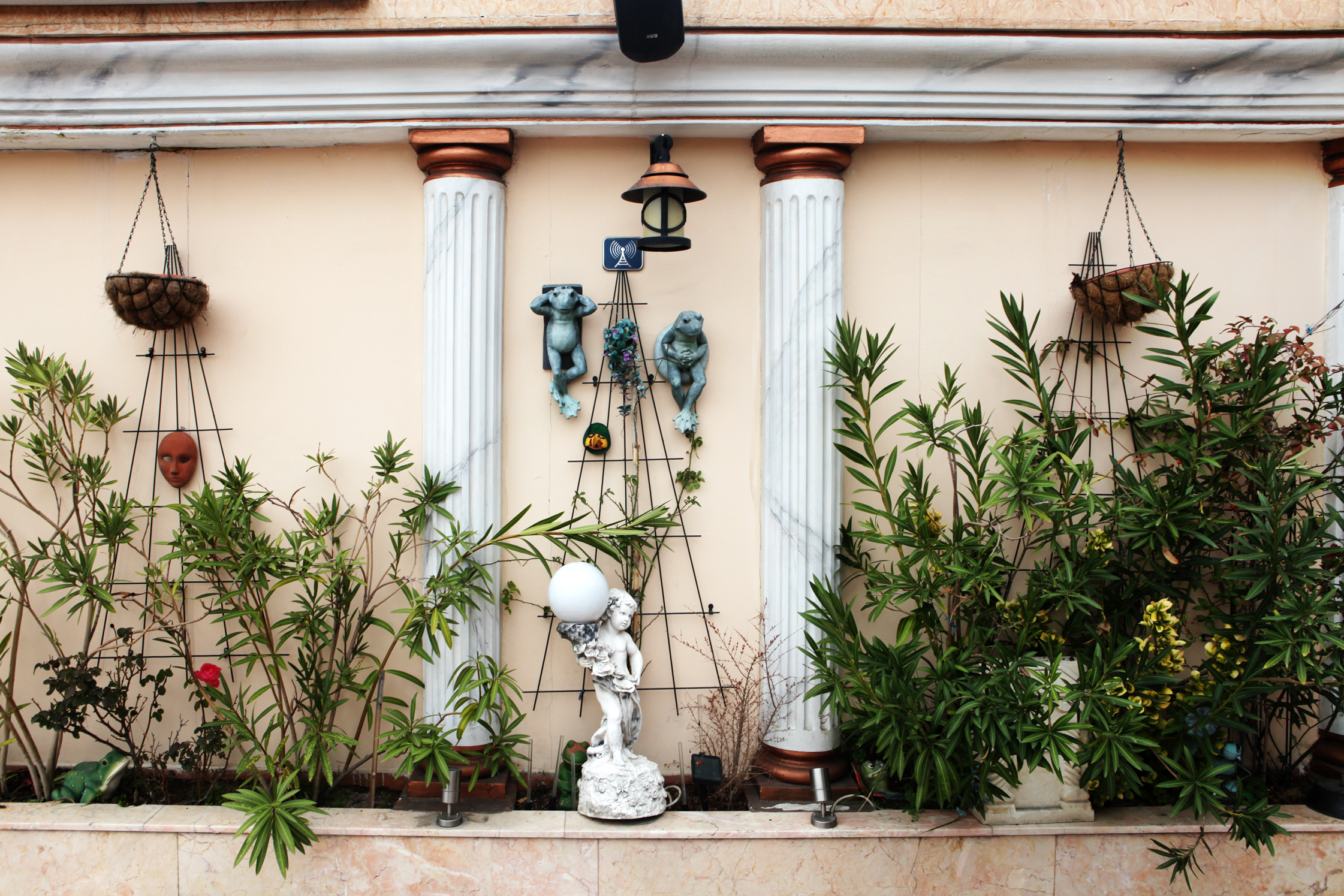
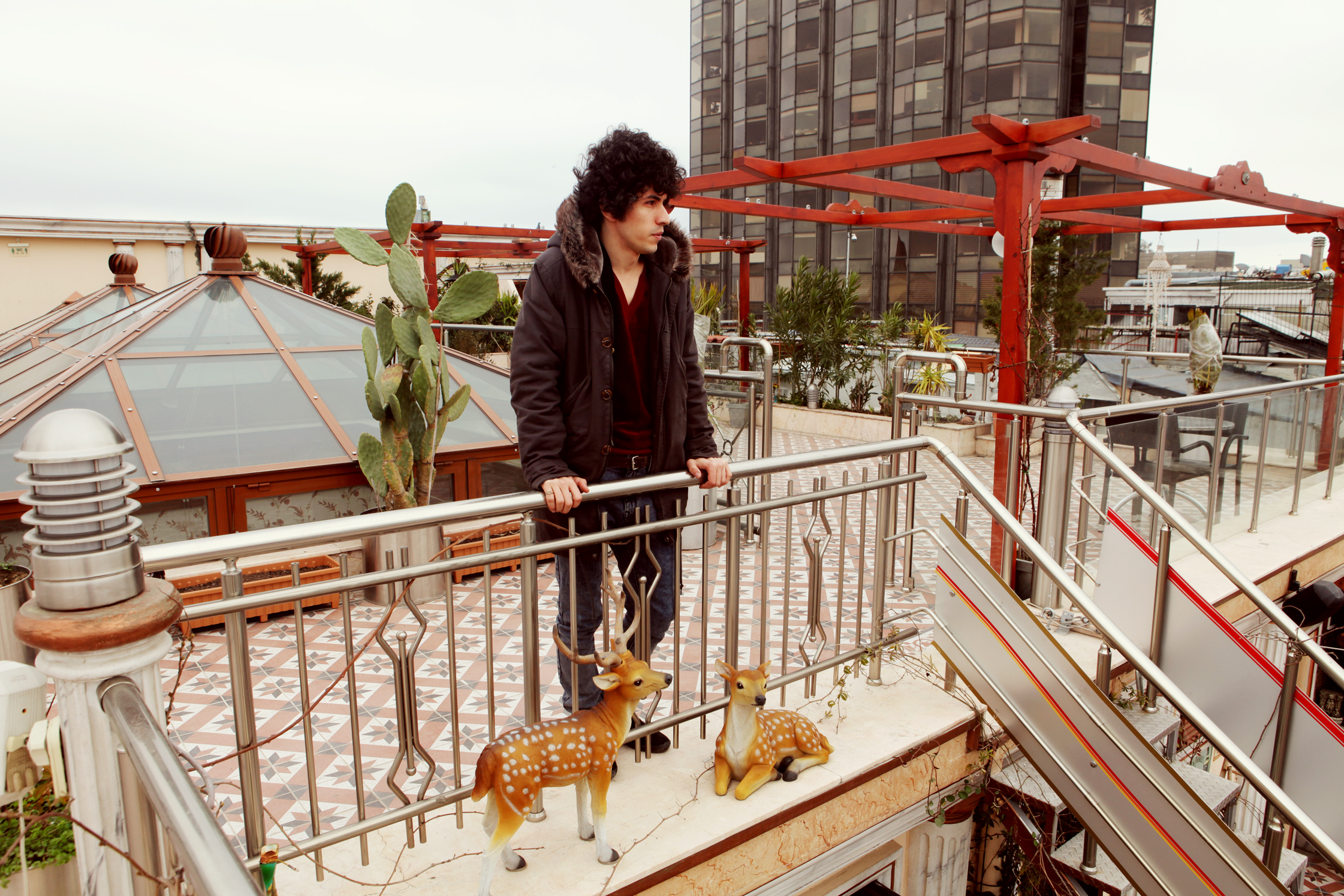
Tell us about how you came to this neighborhood and why you moved from Gümüşsuyu to Tepebaşı.
Well I had to leave my old apartment because the owner started to renovate all apartments in order to rise the rental fees. This was too high for me, so since then I have been living in this apartment. Tepebaşı is a good place for me, it‘s not as expensive as Cihangir and still near to the center of town. Tepebaşı is very close to Tarlabaşı, where up until 2008 mostly gypsies, black people and Kurdish people lived. It was a rather ‘complicated’ area, because everybody had a difficult and different background. Now the government has changed so much there. Due to the state organized gentrification most of those people don‘t live there anymore. Nobody knows what has happened to them and where the rest of them will go to, which is really tragic. But here in Tepebaşı everything is still the same. But who knows for how long.
I really liked my old neighborhood in Gümüşsuyu, I knew everybody there, every shop assistant and every vegetable seller, that gave me a feeling of comfort. To have connections to the people who live around me is important for me, and I hope I can establish the same in my new area now.
Your apartment is quite spacious, you have two bedrooms, two studio rooms and a big living room. Can you describe the benefits of sharing an apartment and working at home?
I prefer to work at home because I don‘t need to leave the house. I‘m not dependent on the feeling of ‘going to work’. I motivate myself and work at home. Also I have always lived together with other artists. In this apartment I live with Ahmet. He is also a painter, his studio is right next to mine. I have known him for about eight years and we have been living together for a year and a half. Although in daily life it feels like we both live alone, because we don‘t see each other that often. But it is always good to have a fresh pair of eyes take a look at your work and probably see things that you did not consider before. This way we help each other a lot.
You seem to be surrounded by small objects, like toys, souvenirs and little pictures here in your home. Some appear to be clearly connected to a person, others are very mysterious. Maybe you can tell us a bit about these things.
I started collecting things in my childhood. Most of these things are toys or miniatures of something and each of them has its own story. I like to put them everywhere into my living space, that gives me the feeling of living inside of these stories. It feels like living in a picture. The objects are like a link from the present to the past. And since I had a quite unconventional childhood these stories and connections have been very important for me. Actually in medieval times, people used a special technique for memories. Paper was expensive in that time so they used a method called ‘ars memorativa’. This method is based on images as well, just like my objects. They built houses in their mind and stored their memories in the form of objects into the different rooms of these houses. So whenever they wanted to remember something important, they just visited their imaginary house.
I keep most of the objects in boxes, which are mostly at my Father’s house. What is seen in my apartment is only a small part of the whole collection. So every time I open one of these boxes I find old memories and connections. It is like preserving time in objects. Objects that come new to the collection, rather by buying or finding them in my friends houses, must also hold a story or a connection to the people.
So the objects are connected to your childhood and family history?
Yes of course, I divide my life up to now into three parts of ten years each. In the first ten years I have been living in the city where I was born in 1984 – in Hakkari. The political situation for Kurdish people was quite difficult in this time. My family got deported from my city when I was ten years old, that was maybe the hardest break in my life and the beginning of the second period of ten years. I liked this city and my family had a very long history there and all this was broken when we left for Çorum. What followed was a life of constant movement. From Çorum I moved to Anakara with my painting teacher, after that I went to a boarding school in Mersin. And before I came to Istanbul, I had been living in Adana for four years, preparing to study art and finishing my high school. The third part of the next ten years took place in Istanbul. Here I finally studied art at Mimar Sinan University and now my gallery is here and most of my friends are, too.
When other people think of their childhood and youth they mostly think of one place and one house, but I am a nomad and this specific house or place does not exist for me. Instead I have my links and little stories of the past as a substitute. I guess that is also the reason why I tend to avoid new things now. I hate using something for the first time. It is the same with houses and restaurants. I prefer to go to places with history.
Like the Hotel Londres?
Yes, this hotel for example was built in the end of the 19th century due to the first wave of Western tourists and the establishment of the Orient Express. Now I like to come here because people have forgotten about it a little bit. That is why it is never as crowded as other bars and restaurants around Taksim. The atmosphere is relaxed and the view from the roof terrace speaks for itself.
How did you realize that you wanted to be an artist, was that a concrete decision for you?
I cannot remember a specific day where I decided I wanted to be an artist. I guess it just came to me, slowly day by day. To me it all felt very natural, and I guess that is what I will do for the rest of my life.
Most of your artworks are rather dark, rarely colored and very narrative. Maybe you can explain how you work and if there is one main theme behind your works.
There is no general topic in my works. Of course most of my paintings are quite dark but that depends more on the technique I use, than on a general chosen atmosphere. Mostly I work on paper, because this material gives you an immediate response to whatever you do to it. For example canvas doesn‘t give any reaction for me. I grew up with paper, and I learned the language of it, and of course it‘s much cheaper than canvas. I bought most of my paper from a small shop in Eminönü. Every time I go there the owner offers me tea and we talk for a little while. So even the paper I work on has its own history. Also storing old paintings in my studio is much easier with paper than canvas, I can roll it up.
You have a lot of banana peels around your apartment? Why is this?
Yes, haha, I collect them. I never throw a peel in the trash. They have a very interesting shape and I have used them many times in my wall installations. It is very fascinating how they develop from a living thing to a complete dry and dead shape. The color changes many times, and so does the smell and the consistency. I like to see all these diverse states of death. A little bit like old people. Although I do not know what I am going to do with all them now. I know one day I will use them again, and until then I will keep collecting.
You mentioned you sometimes stand on old books when painting. Is this out of practicality?
Yes, these books. Actually this is an old encyclopedia, I have many of those everywhere in the apartment. Ahemt uses them, too. It is true, mostly I use them for working. For example when I want to reach higher areas in a painting, I take them as an adjustable pedestal. Sometimes only one book, sometimes four. Or when I want to straighten some old paper, I put these books on the corners, actually you can use them for everything. Even as a chair if you just stack enough of them together. And of course I also read them.
It‘s interesting, when you look up Nietzsche for example you will probably find a short biography and a list of his important works, but it does not give you any direct link to Schopenhauer like Wikipedia would do. Instead the next article is about William Nieulandt – German artist 1587-1658 – to me that‘s sometimes more interesting, and somehow really creative. Books in general have a high value for me. I know exactly what I want to read in the next ten years, and I like to be surrounded by these books already. It means I have direct access to them at any time.
You have a series of paintings that reference your collection of old student yearbooks under your desk. What is the story behind these books?
My collection of yearbooks from Turkish students in the 80s are absolutely important for me. They are direct proof and evidence of this time, which was also very relevant for me. The clothes they wear, the haircuts, the expressions on their faces and also what they write about each other. I use these images in many of my works, but especially in the last period which was about the ‘construction of a generation’ and the 80‘s in Turkey. Of course I count myself as part of that generation, and for this reason I wanted to know everything about it.
You just mentioned that you work in periods, can you explain that a little bit more?
My life is very periodical. When a new idea comes to me, for example from a text or a memory, I try to get very deep into it for a certain amount of time. That includes reading books about it, watching movies, doing research on the internet. And then eventually I make paintings or sculptures about it. But I never decide by myself when one period ends and another begins. It is more like a slow fade into a new idea or thought-construction. But it‘s funny, I realized that every period has some smaller sub-periods, which I also cannot control. For example in food or music. For the last two weeks I have been eating menemen – Turkish style omelet – every morning and listening to 80s music while working. The weeks before that I went to Hazzo Pulo tea garden every morning and ate toast. For people around me, that can be annoying, but I cannot control these things. I wonder what will be next, maybe chocolate pudding.
The tea garden you just mentioned is very old. Can you tell us why you go there so often?
This tea garden is a really old place. I think it was built about 150 years ago, and it is barely restored. Now the atmosphere is very charming, I guess that is the main reason – besides the delicious tea of course. Mainly young people come here, and almost every time I meet someone I know. You can have a chat, or if you just want to read and watch other people, this is the perfect place.
What is the art scene like in Istanbul. It appears most Turkish artists live here.
Istanbul is the center of most of the art happenings in Turkey. The money is here, and not in the villages in the Eastern part of this country of course. We are a small society and everybody knows everybody. I don‘t know whether this is good or not. But you can realize this very quickly, as you meet the same people over and over again at openings and art projects. Everyone has to find their own position within this group, and I guess mine is quite strong now. But for me, more interesting than the positions in between the artists, is the position of the artists in relation to politics. In these times politics have a huge influence on the creative scene: that is a problem. But of course everyone has to decide for themselves which way to go.
Where do you see yourself in the future?
I think after living this long in Istanbul it could be important for me to live in another city and country for a while. To see a different light and to meet different artists. Of course my art is related to my country and my history, so new experiences might inspire me. My secret dream is to make a film about something. I don‘t know what about yet, but I have a strong feeling and urge to do this at some point.
Thank you Erol for your time and to hear about your background and life in Istanbul. To see much more of Erols artworks check his website here or his gallery’s website here.
Interview and Text: Eva Lechner
Photography: Georgia Kuhn
